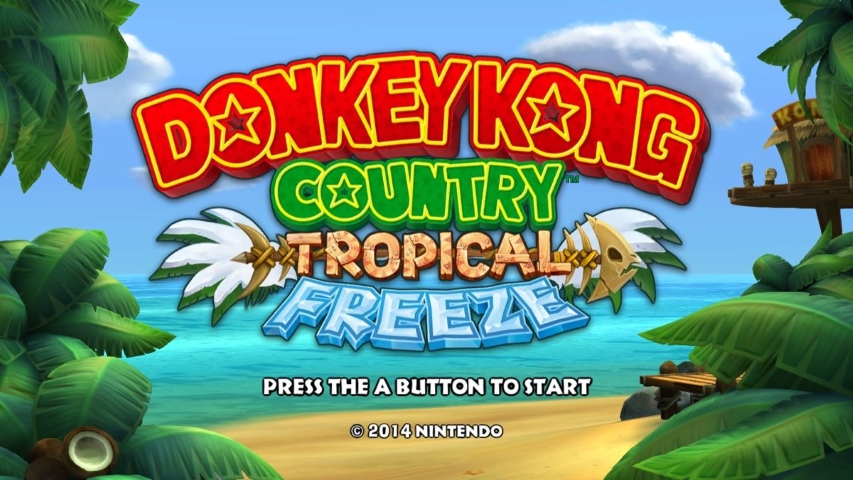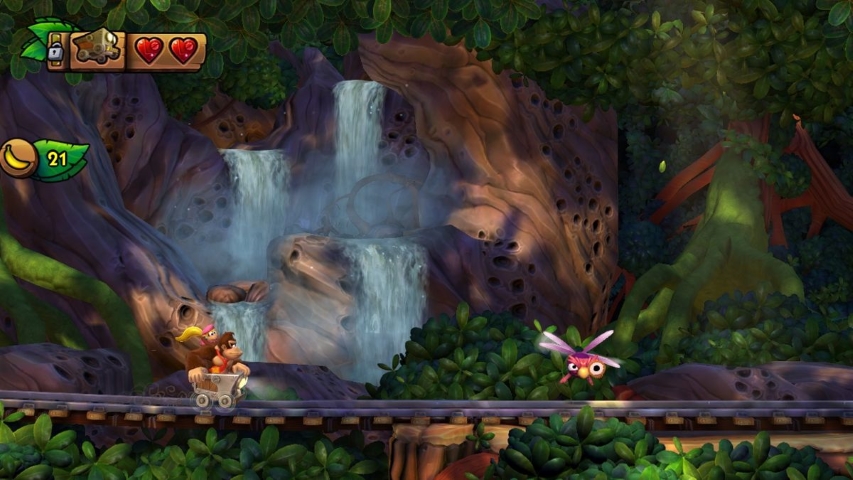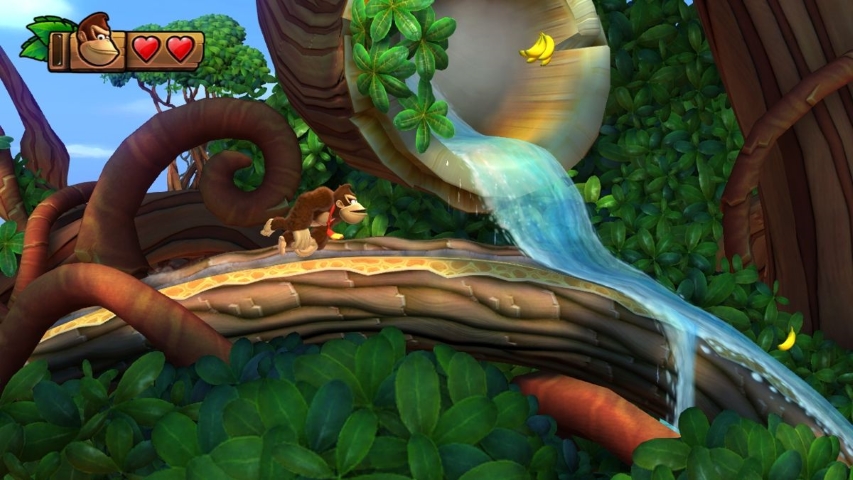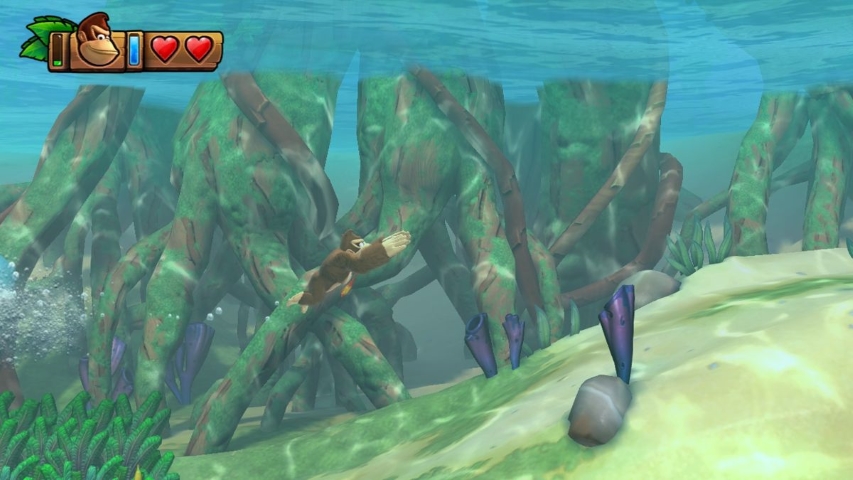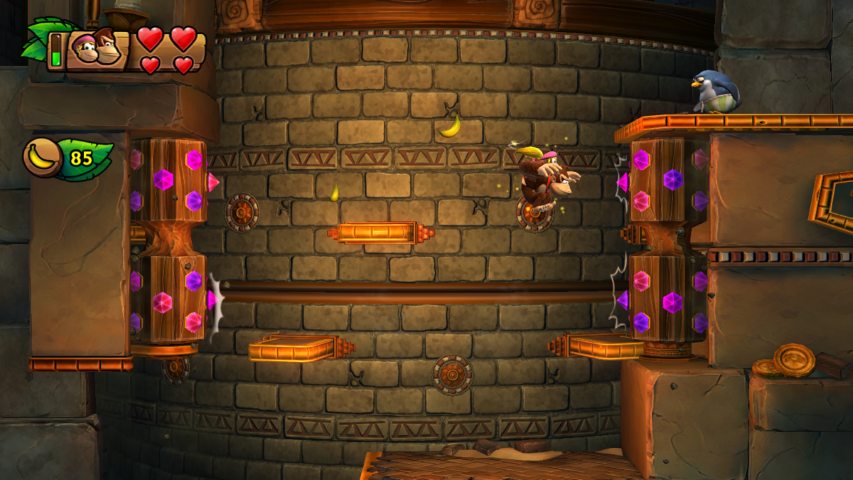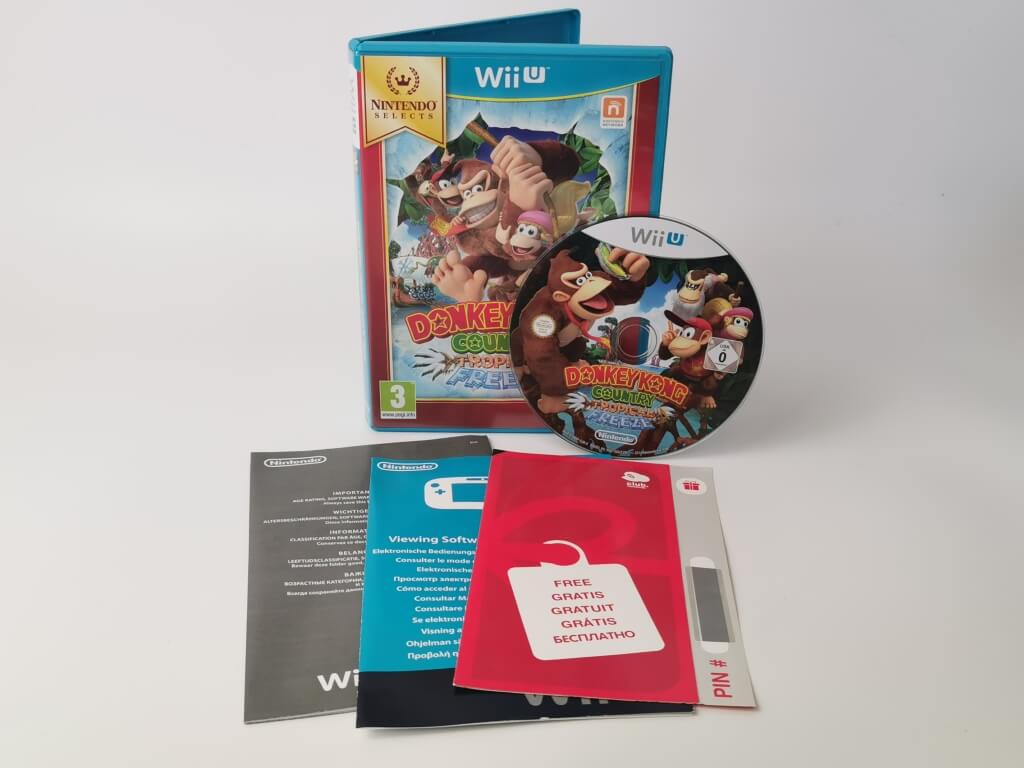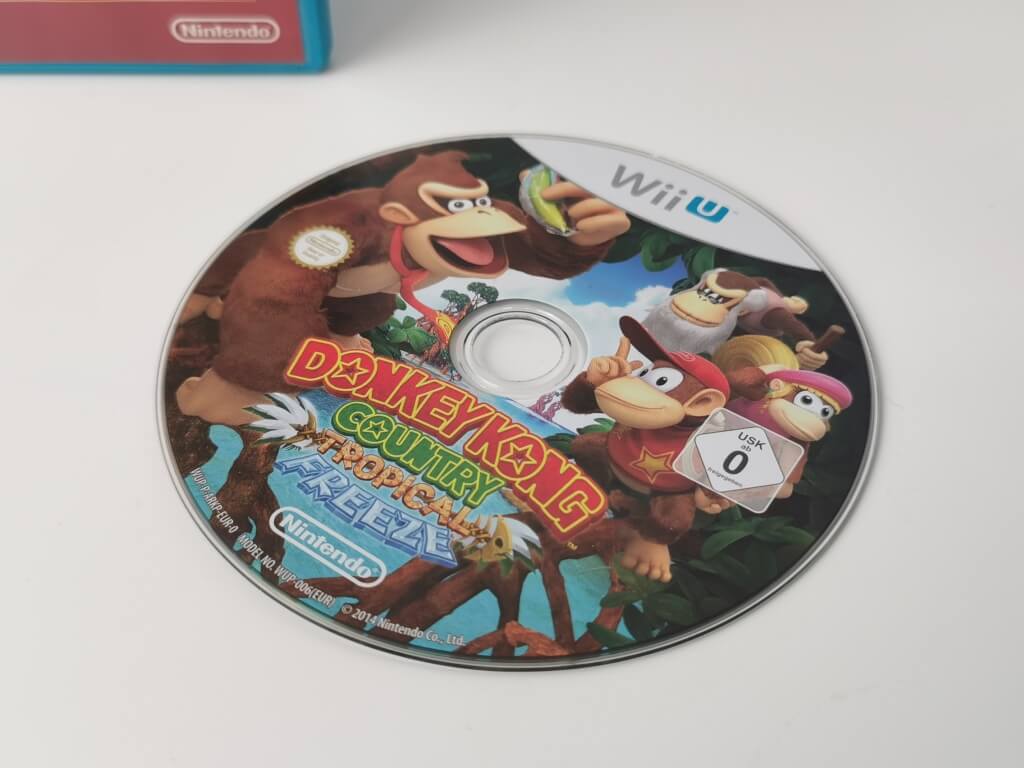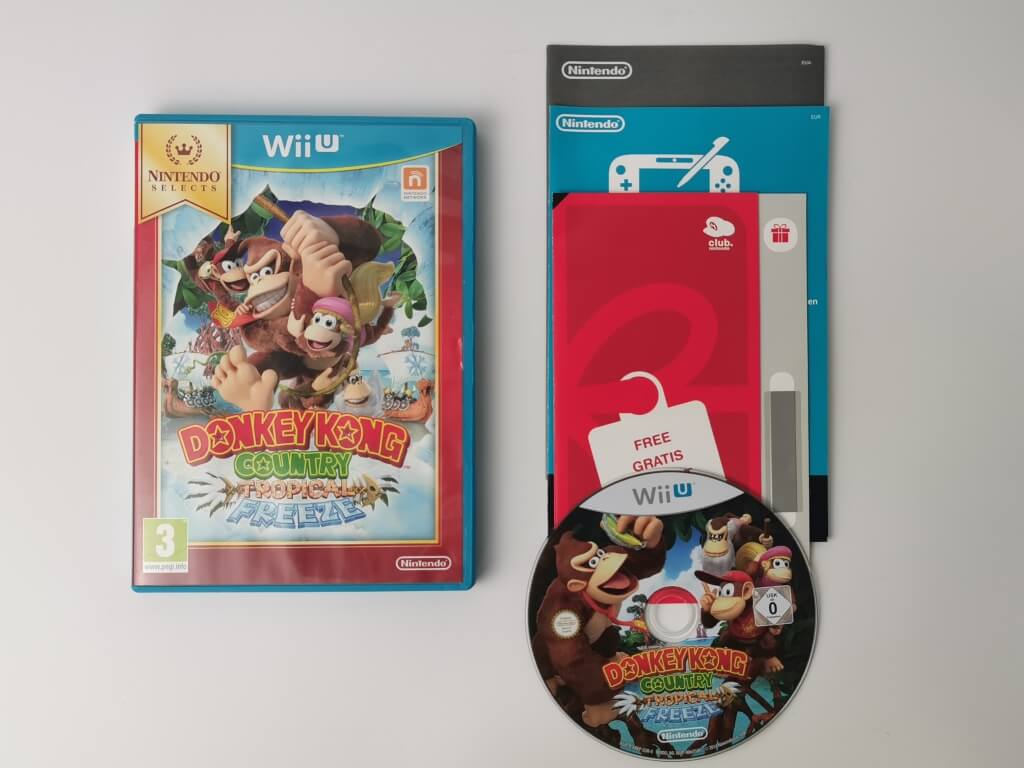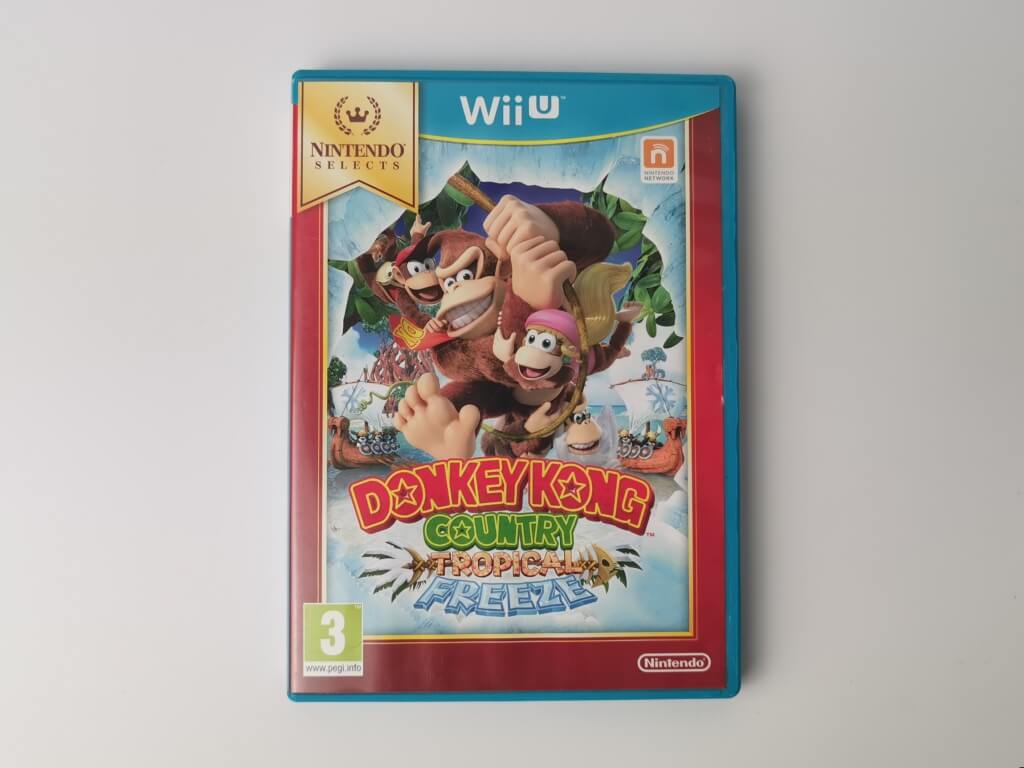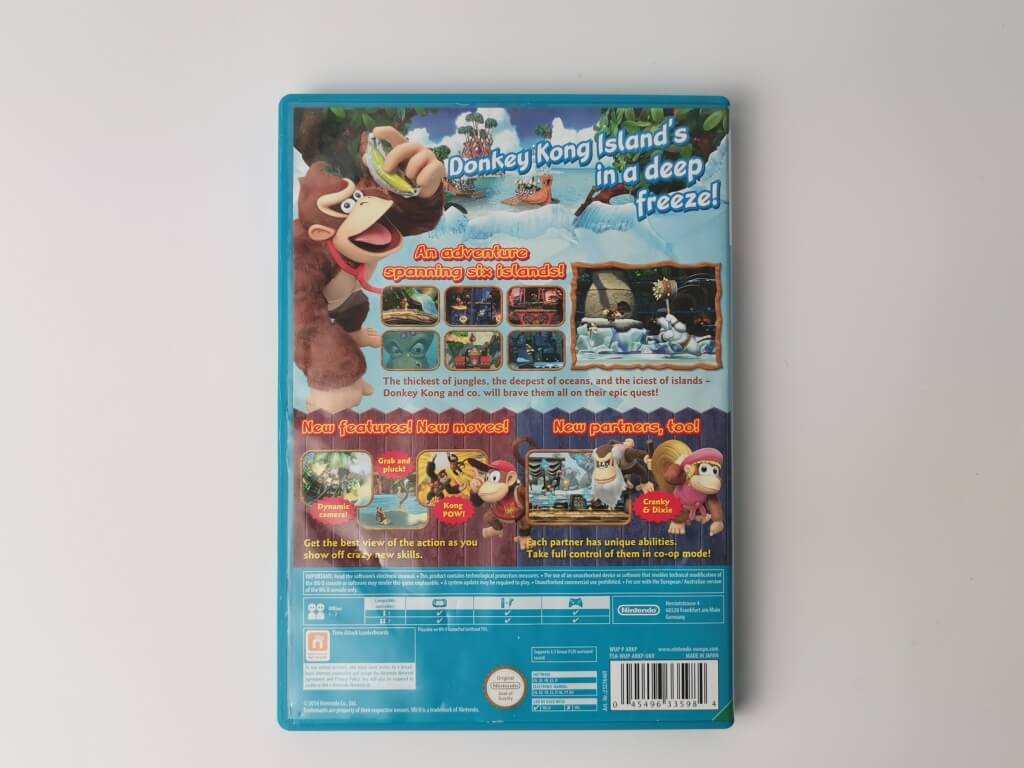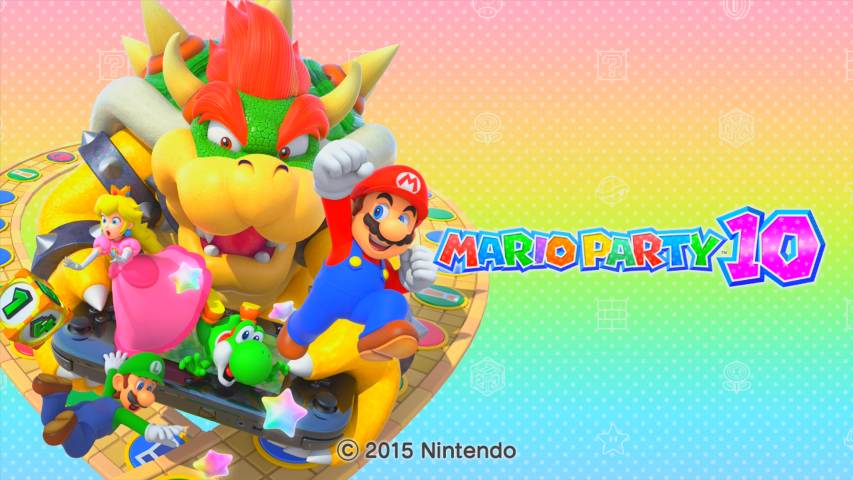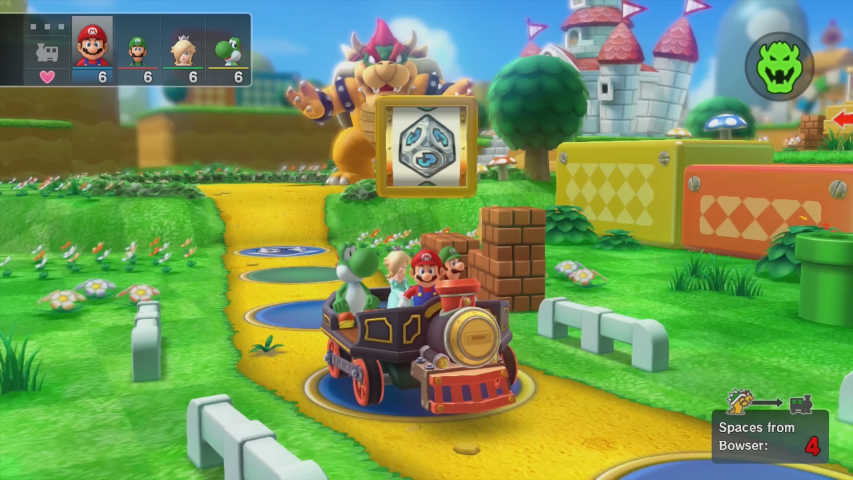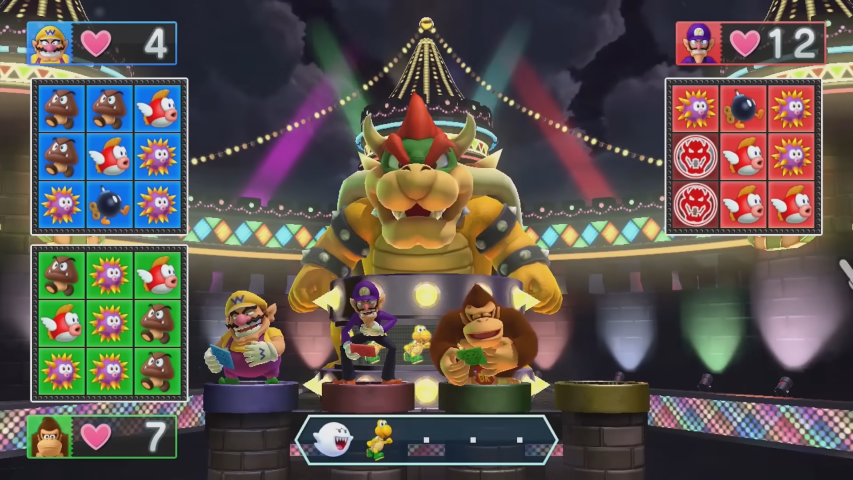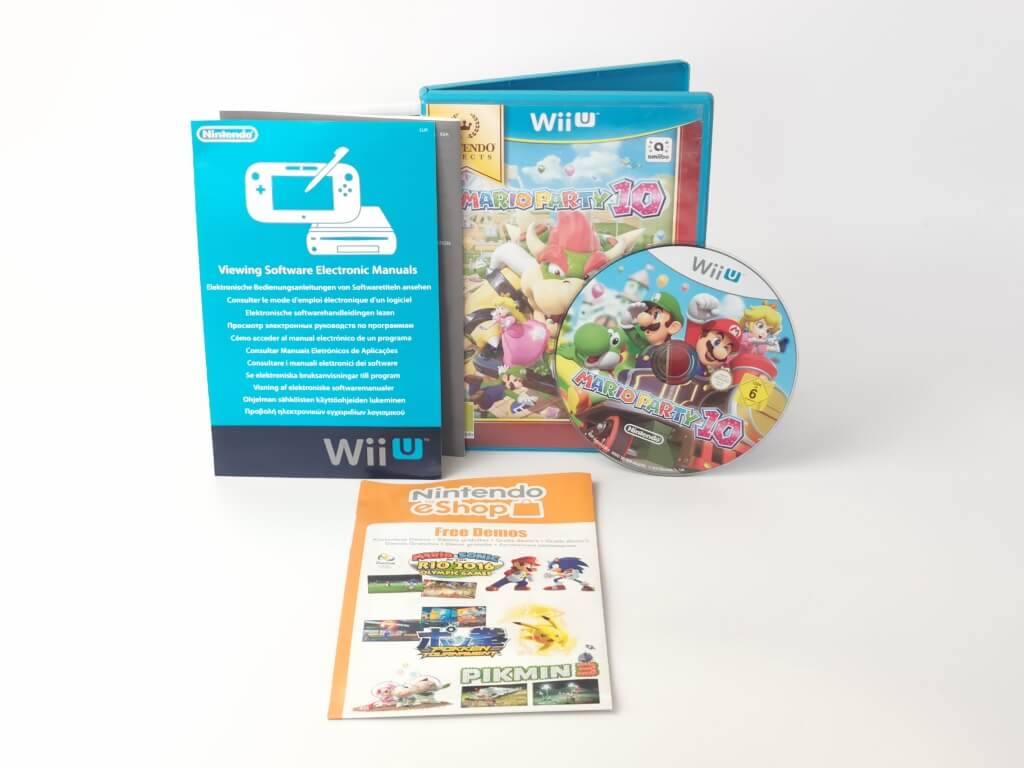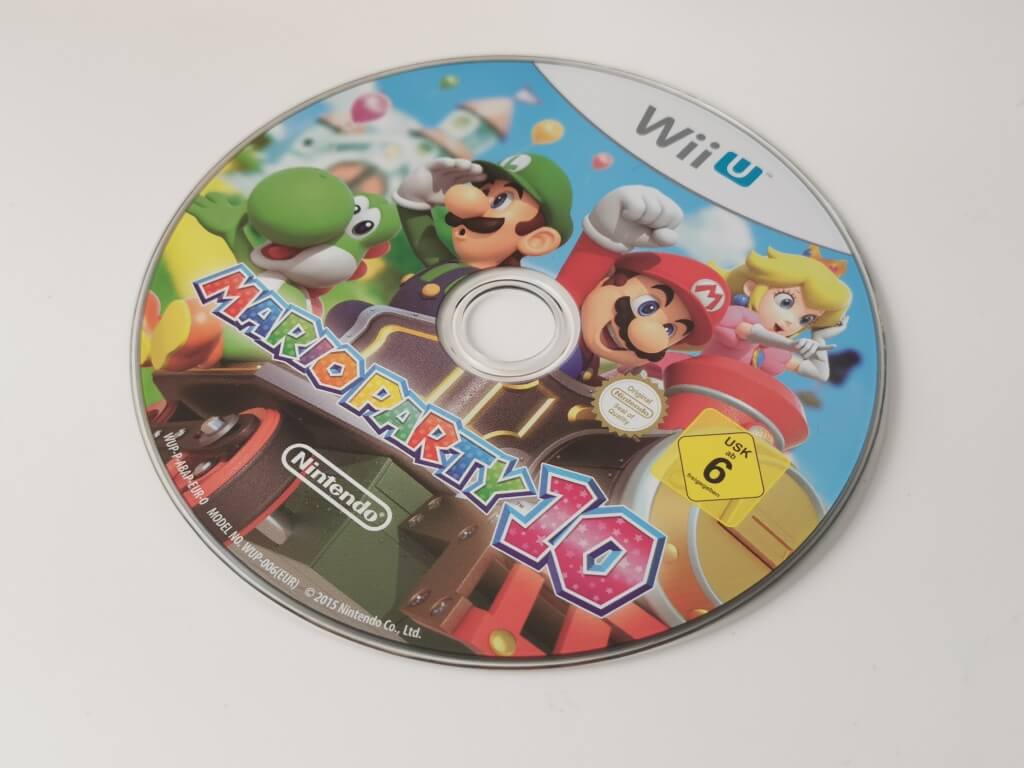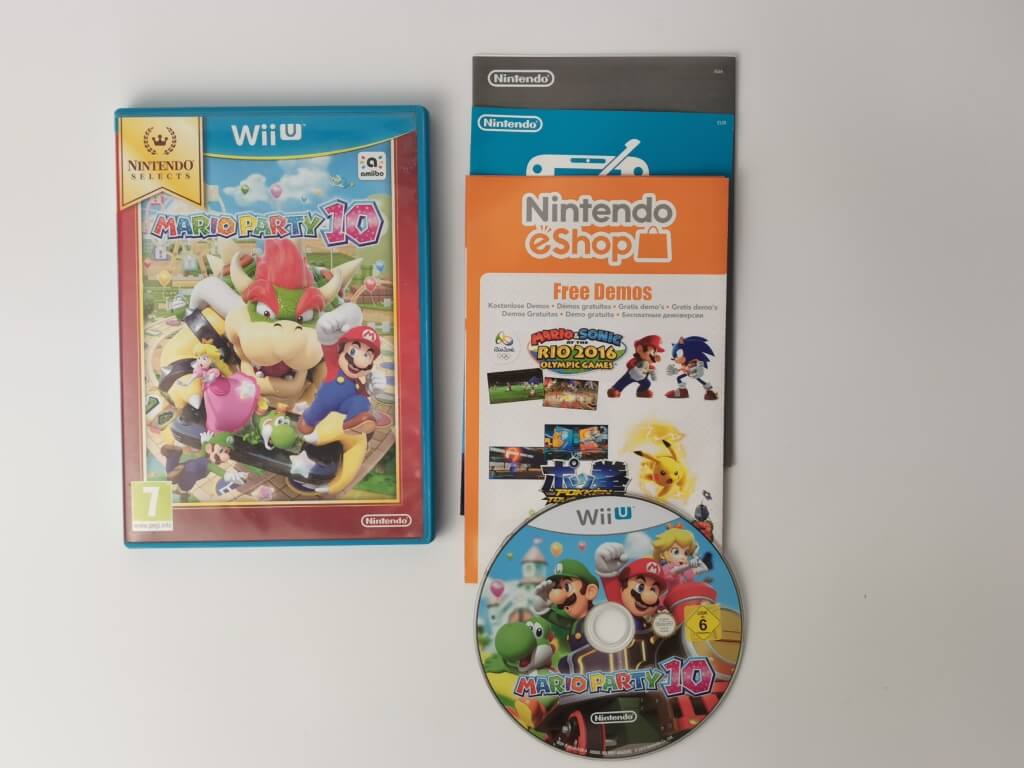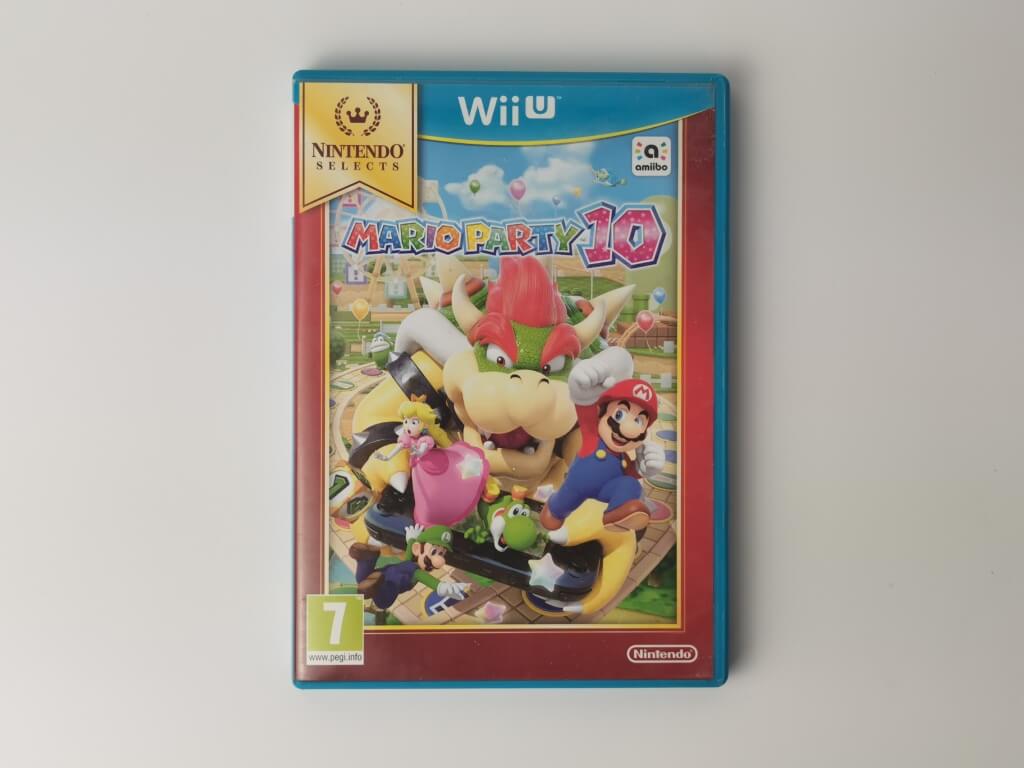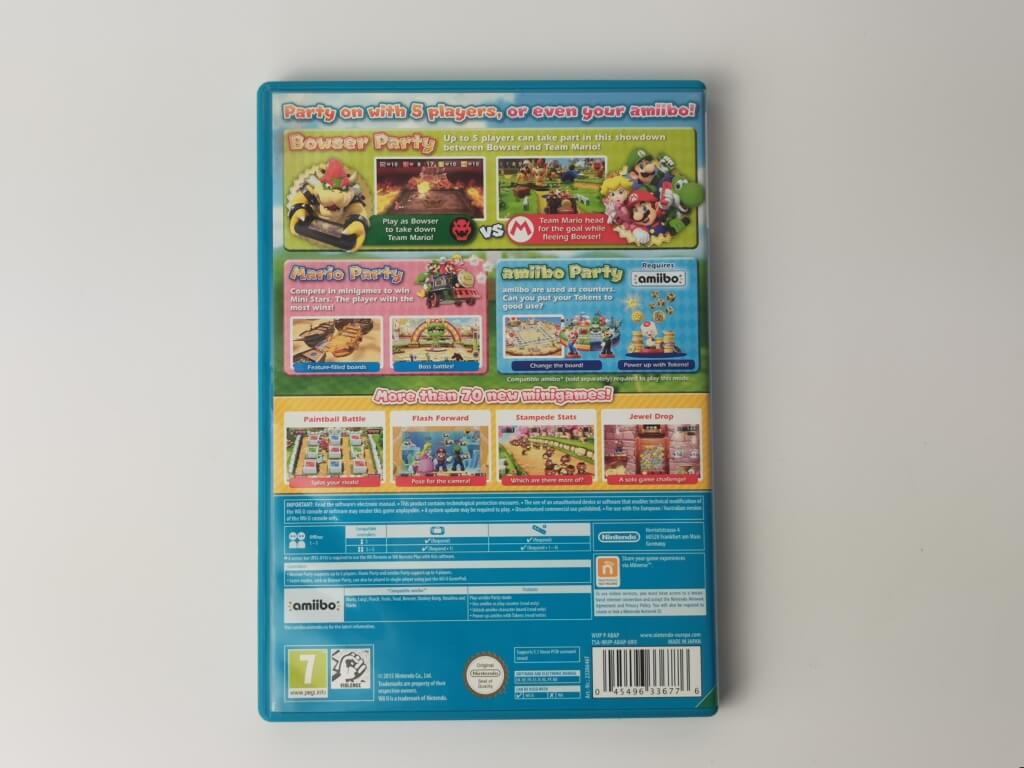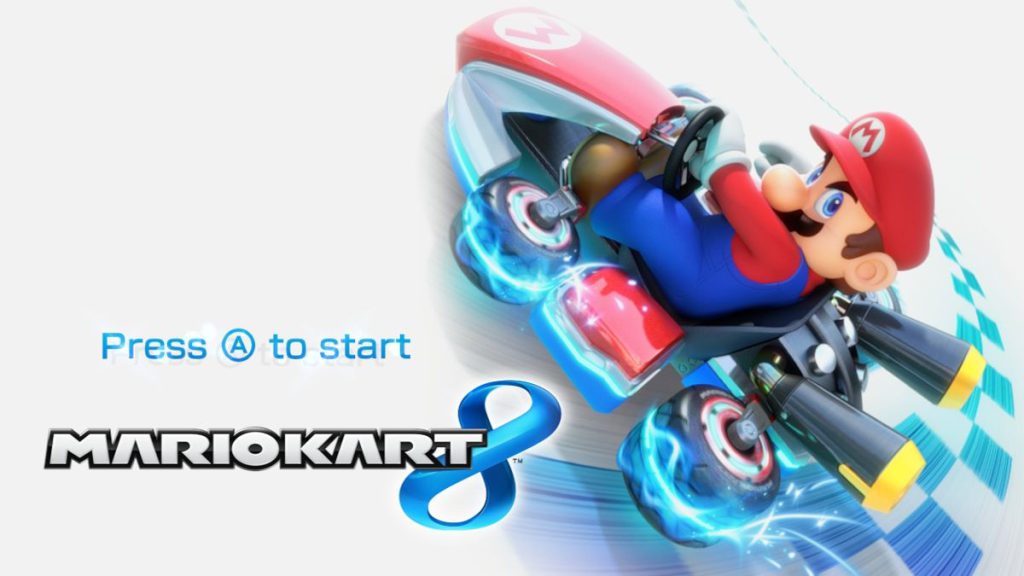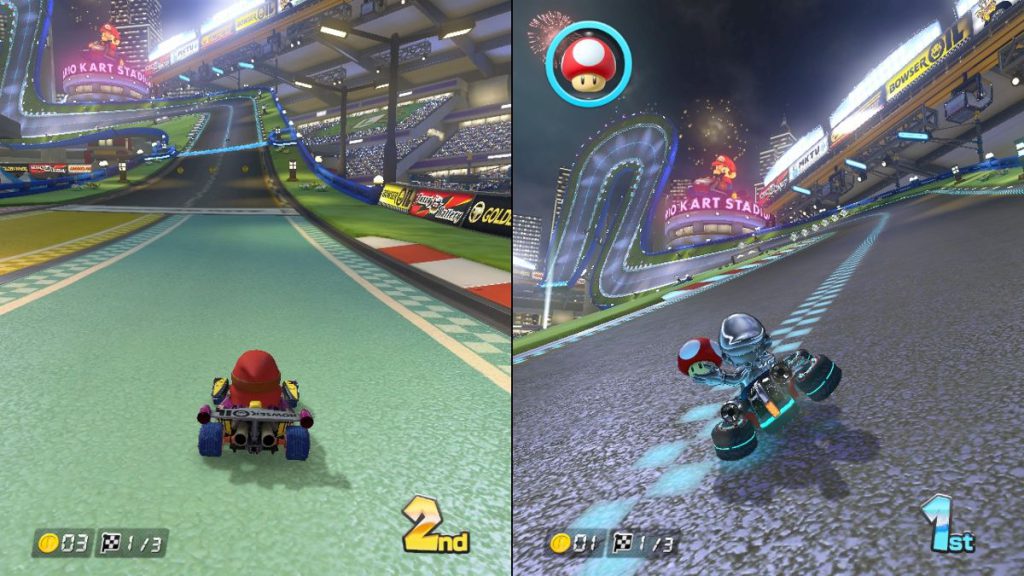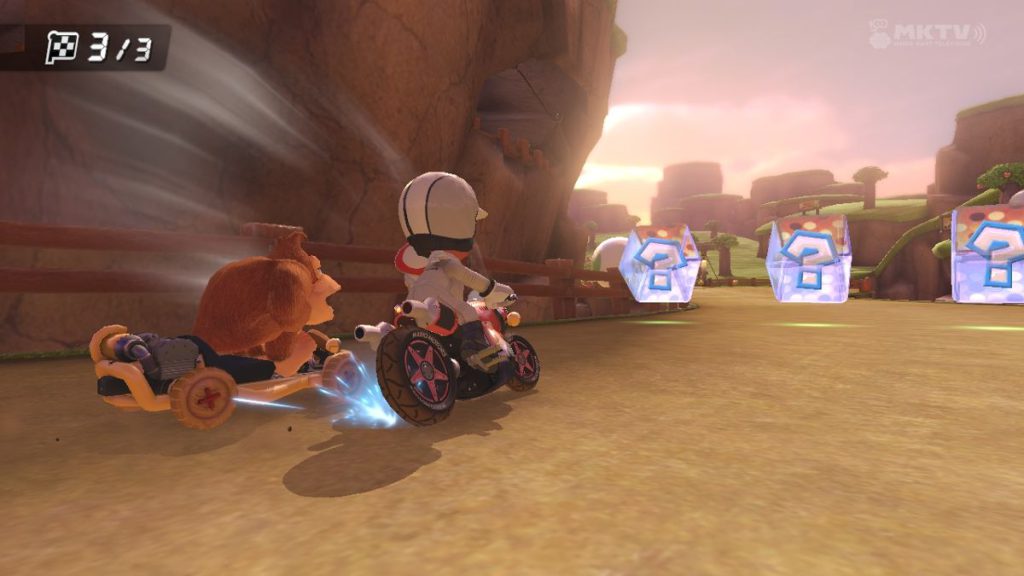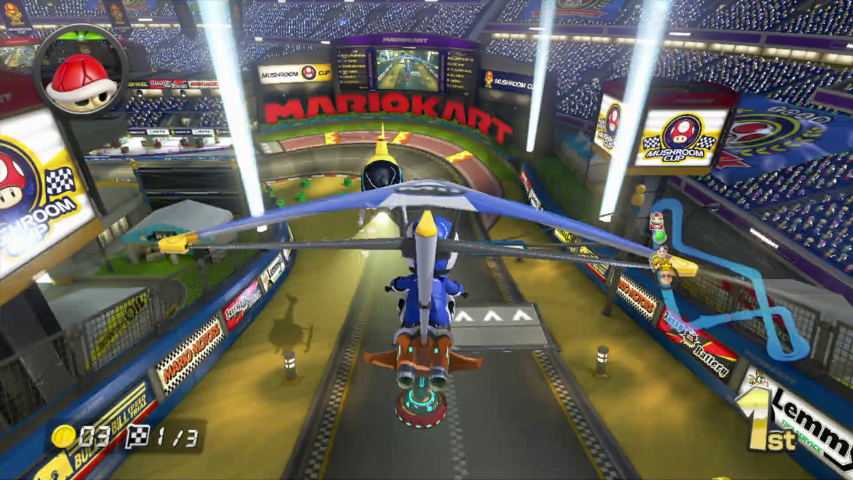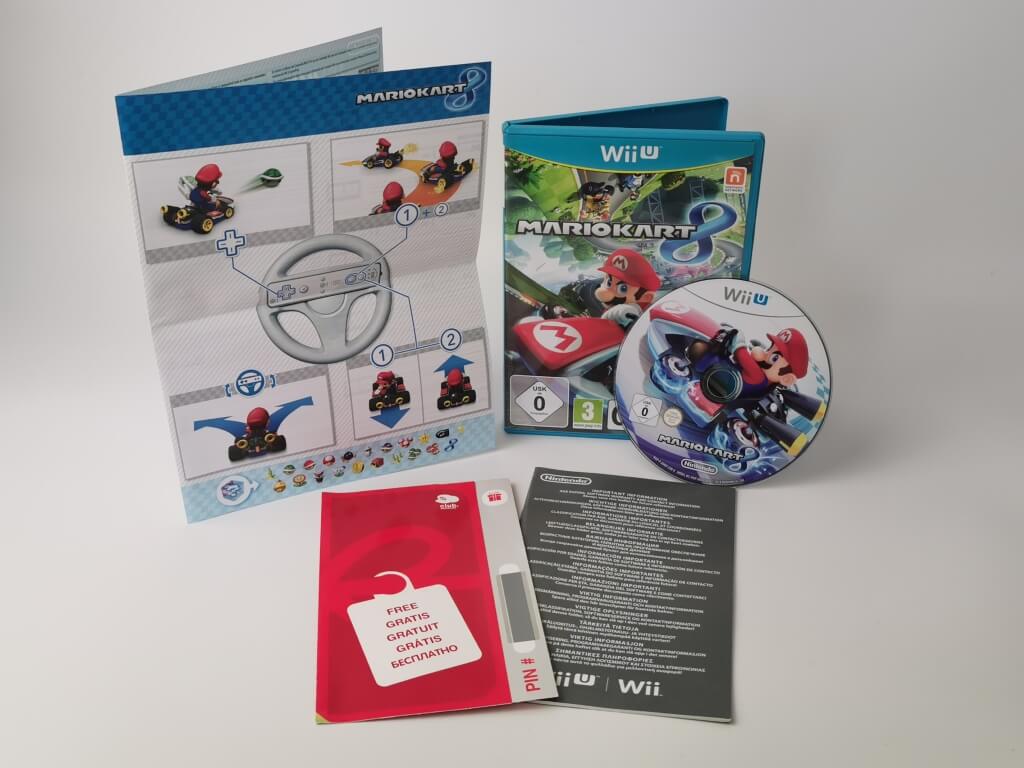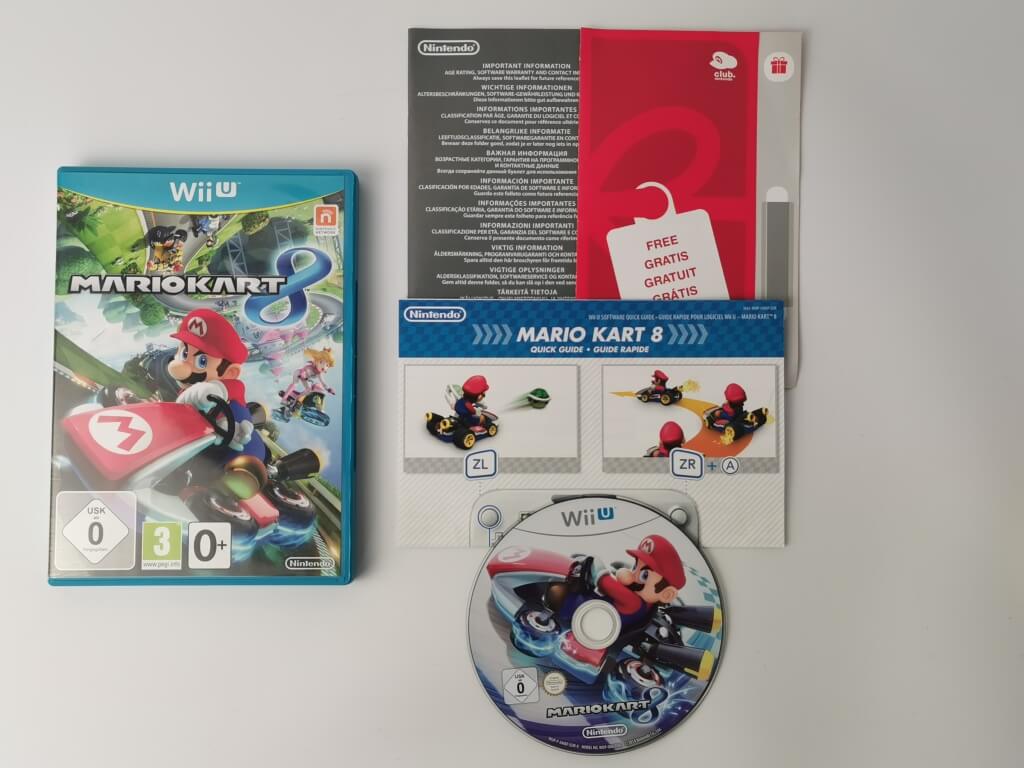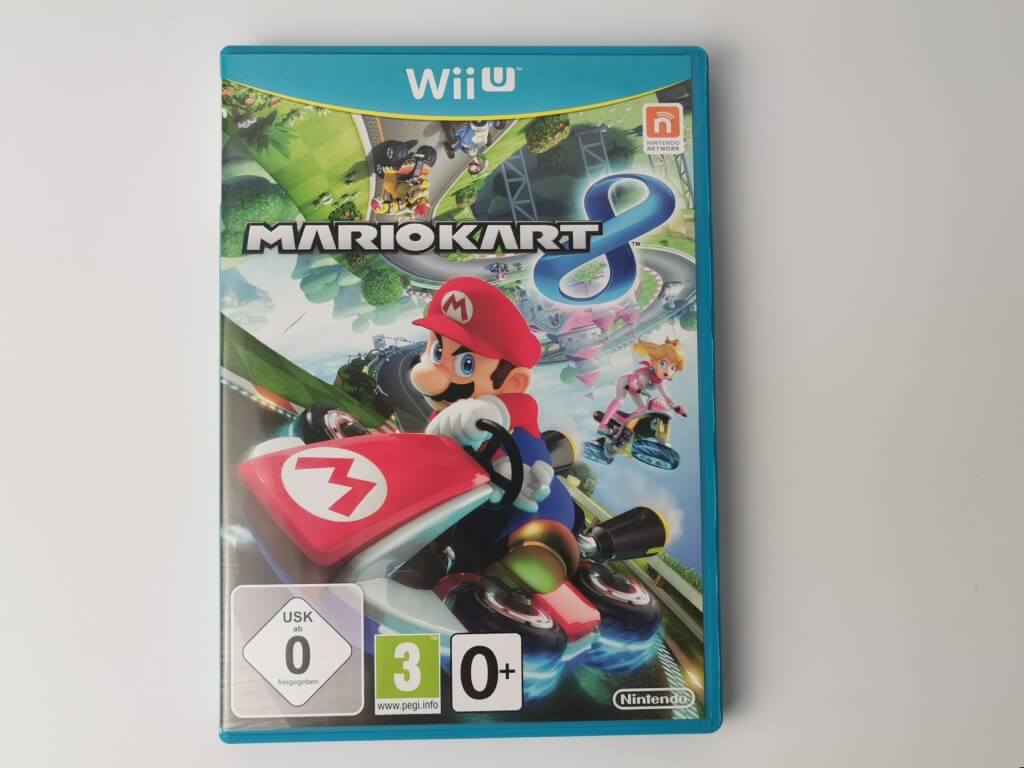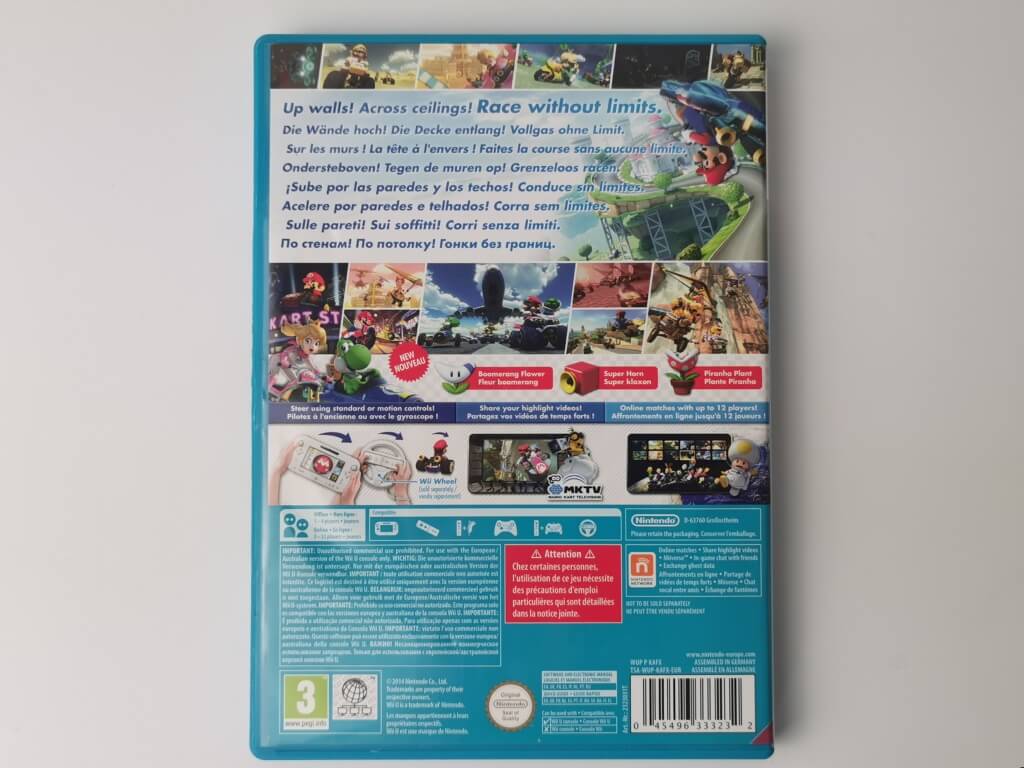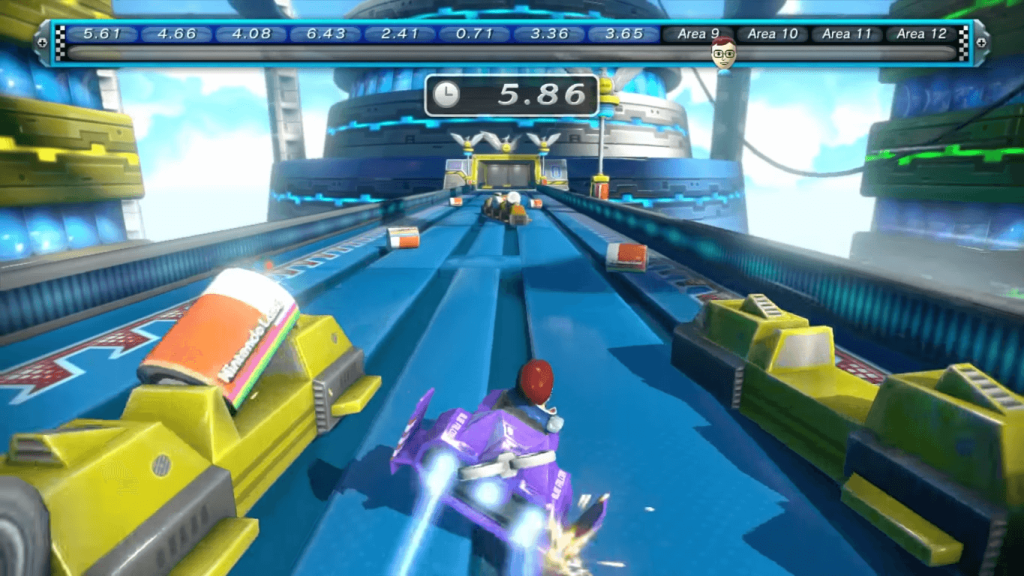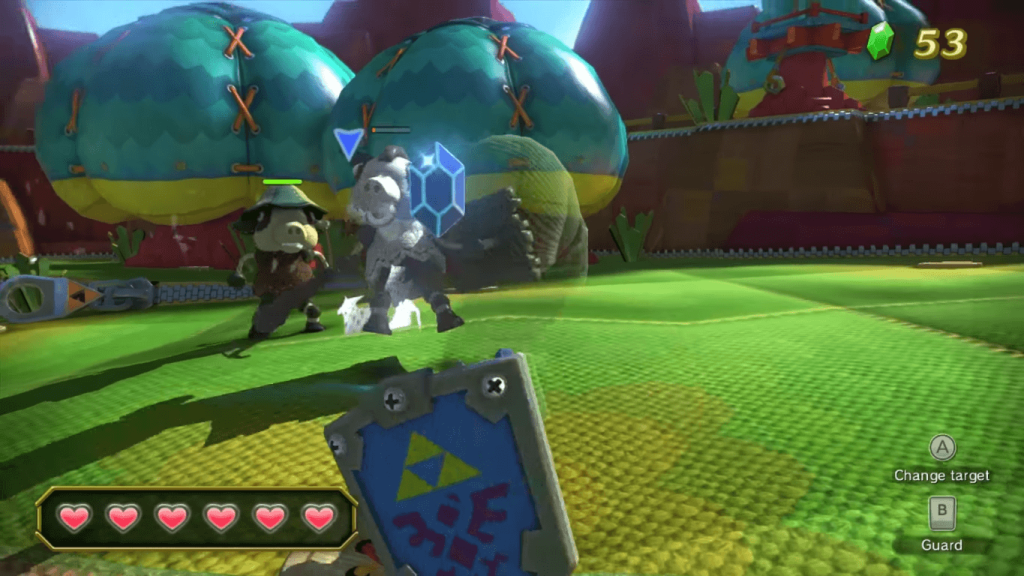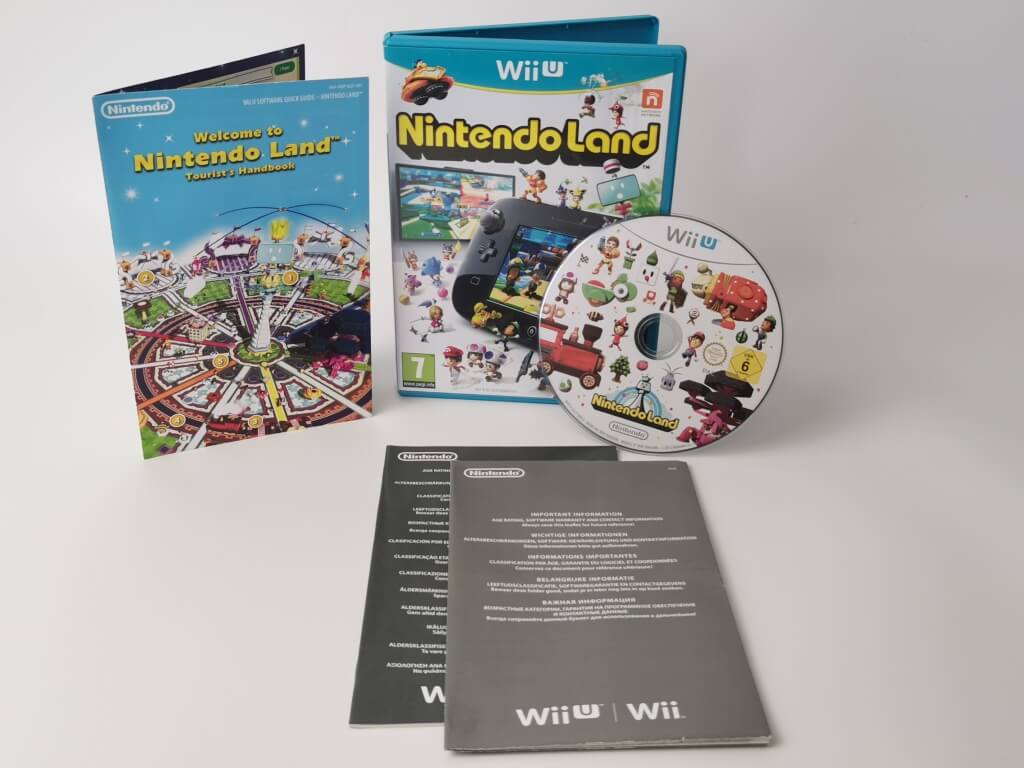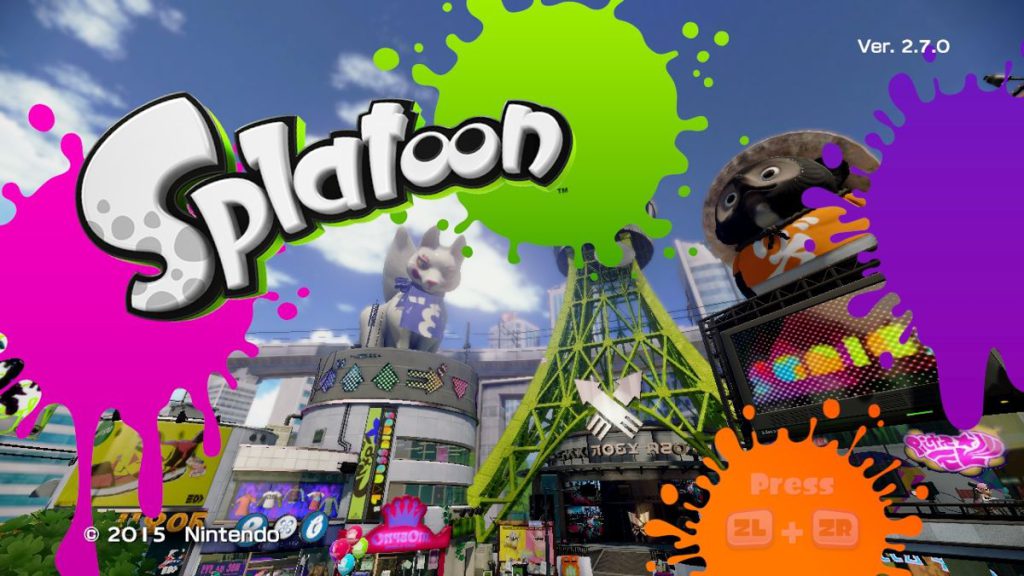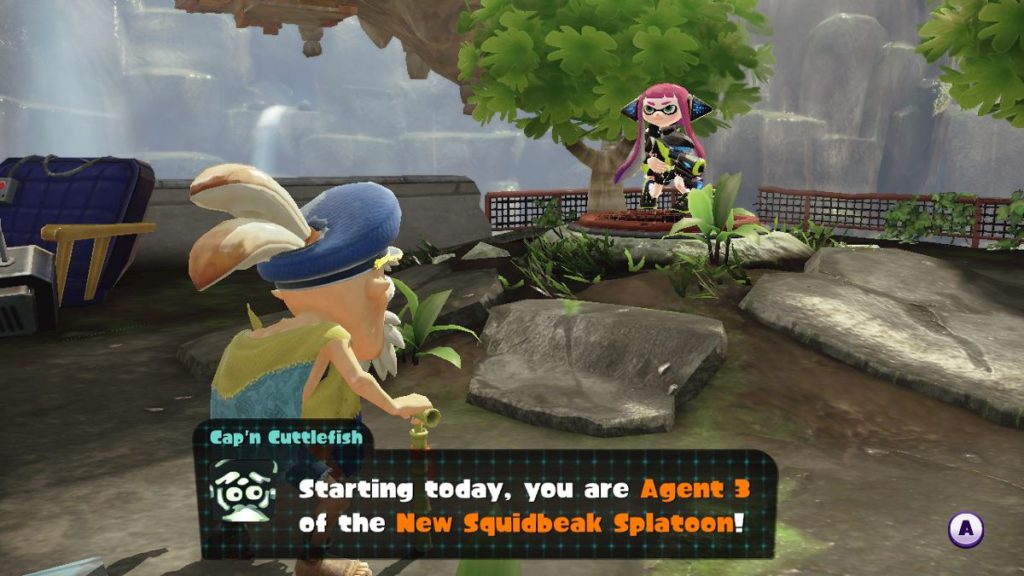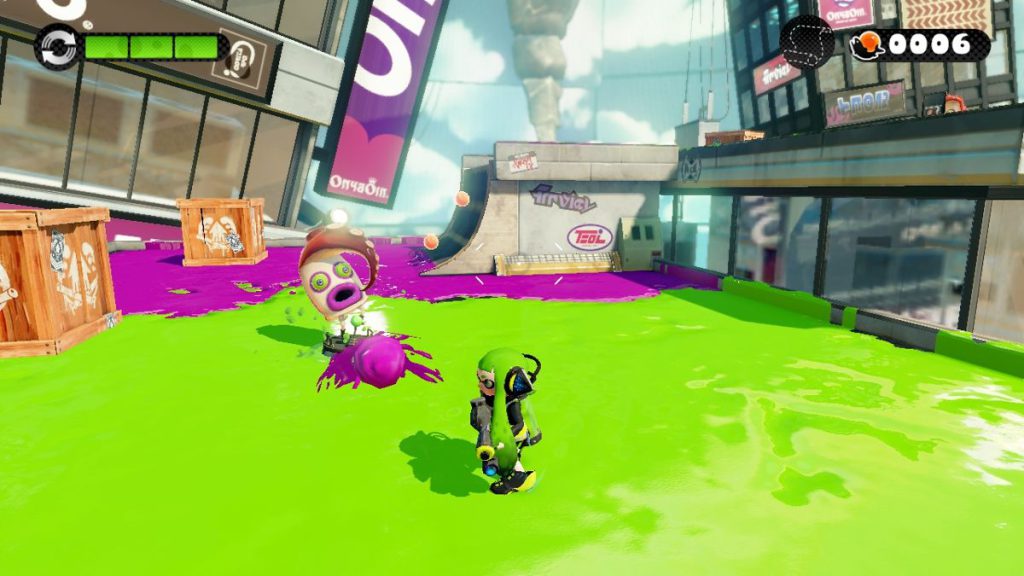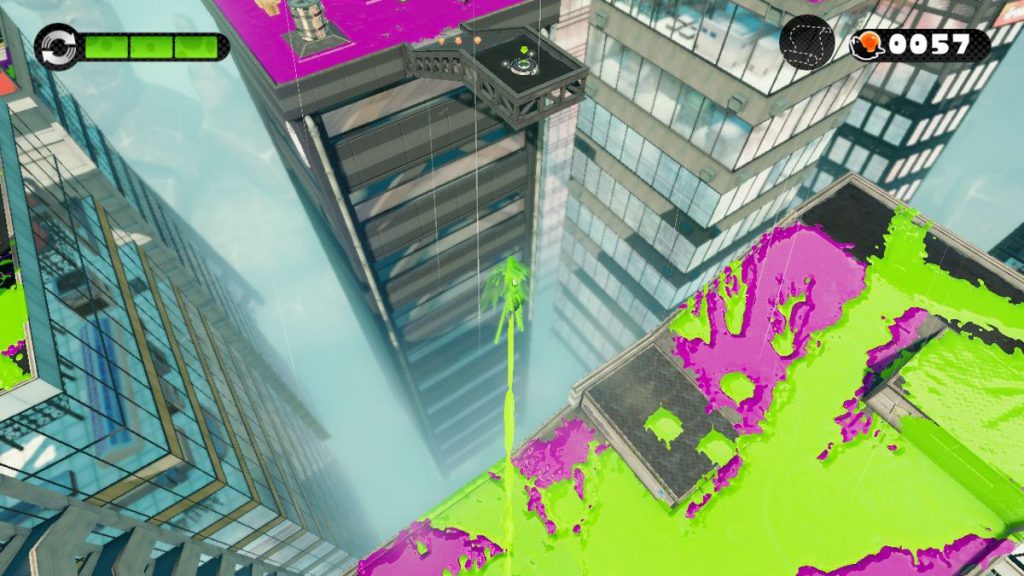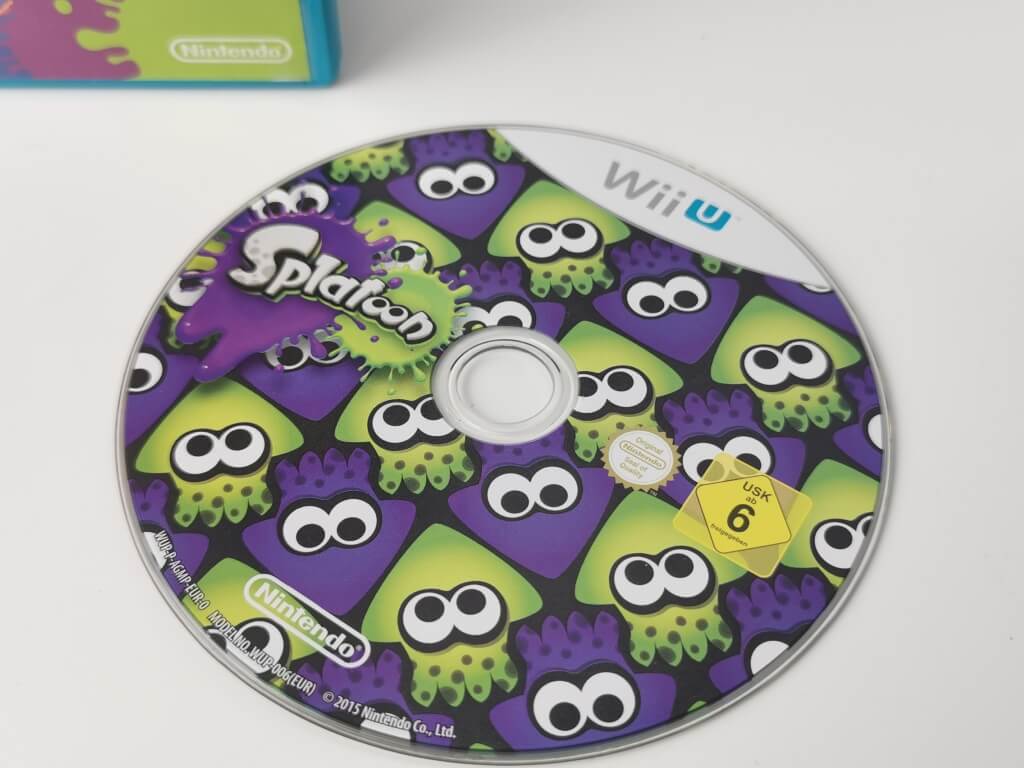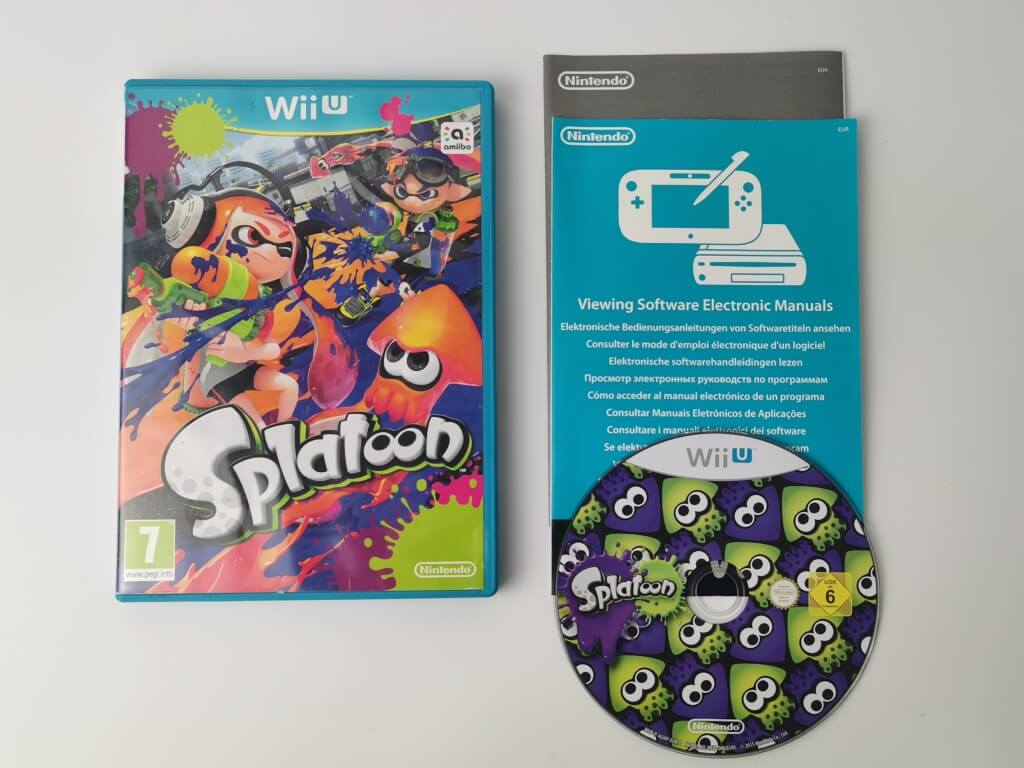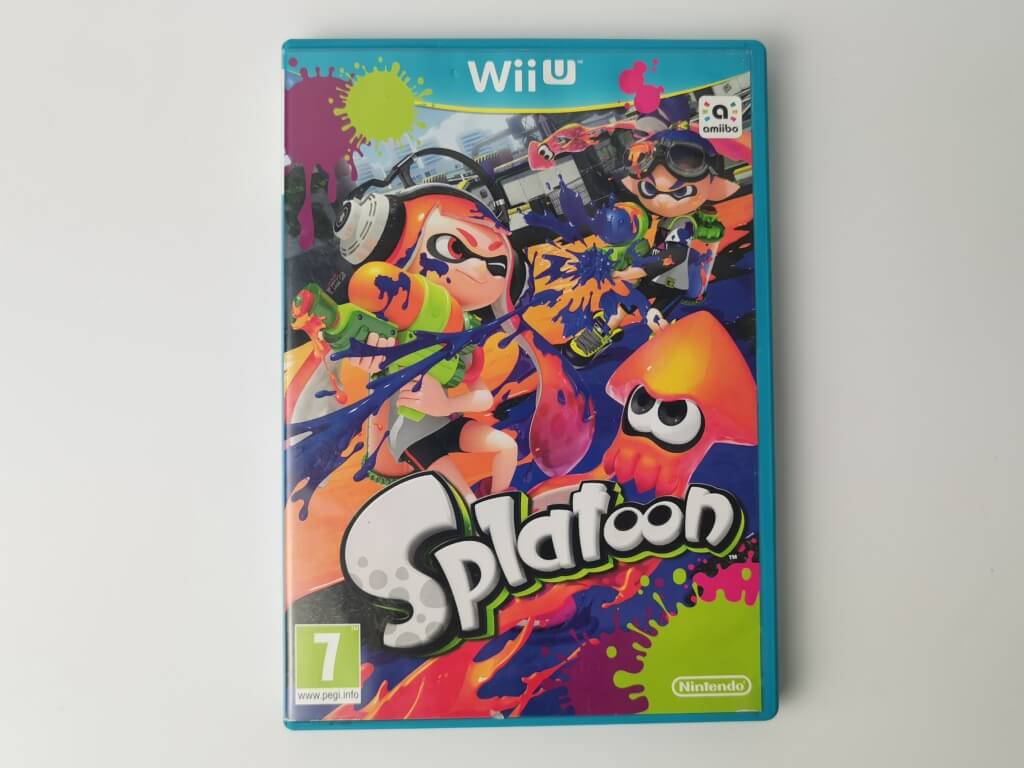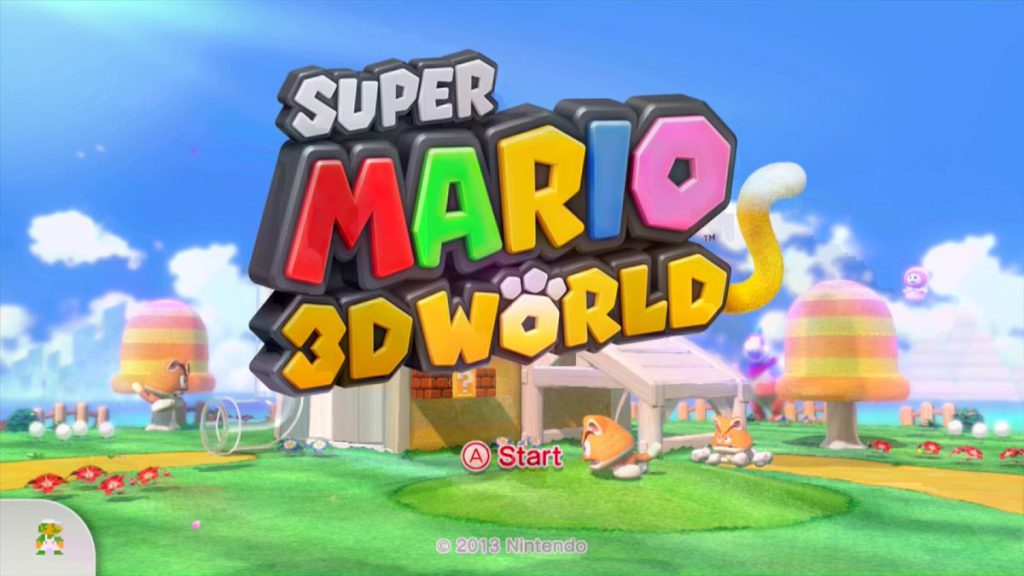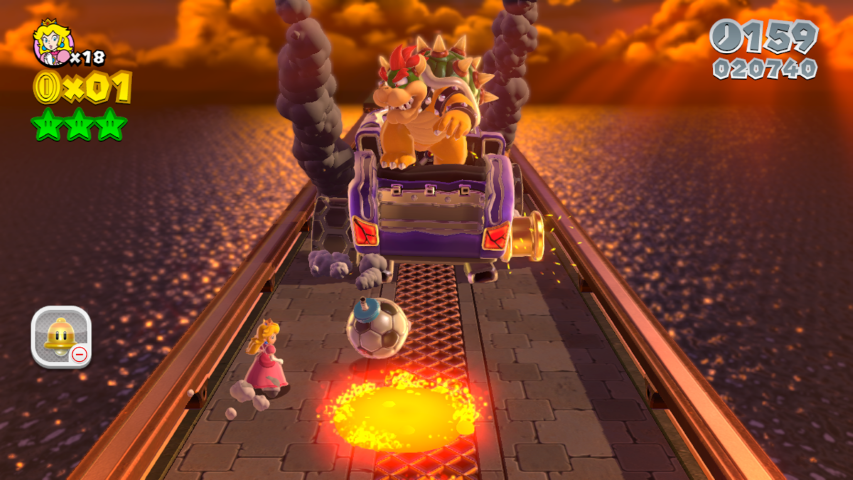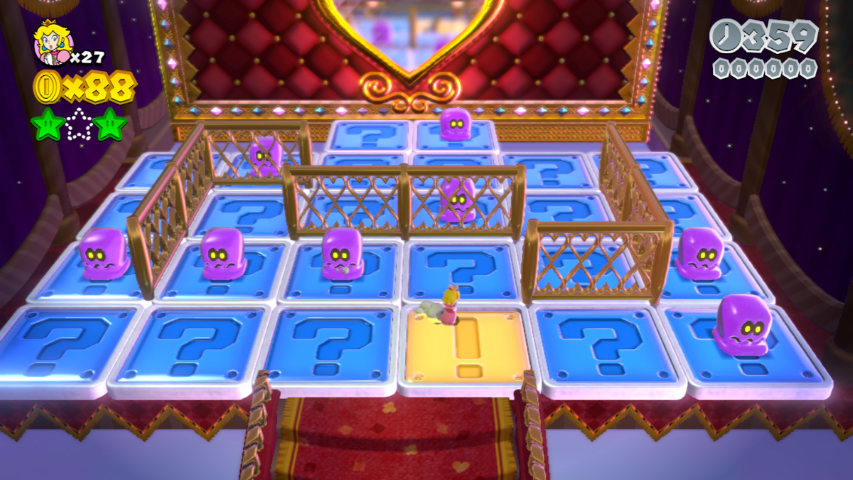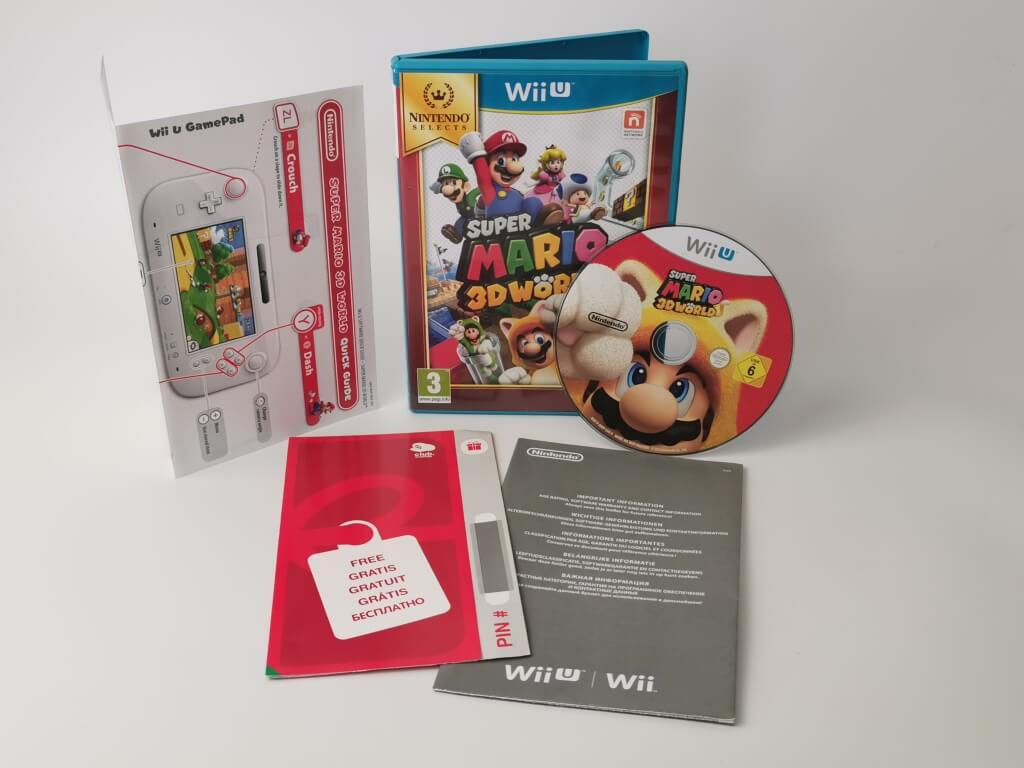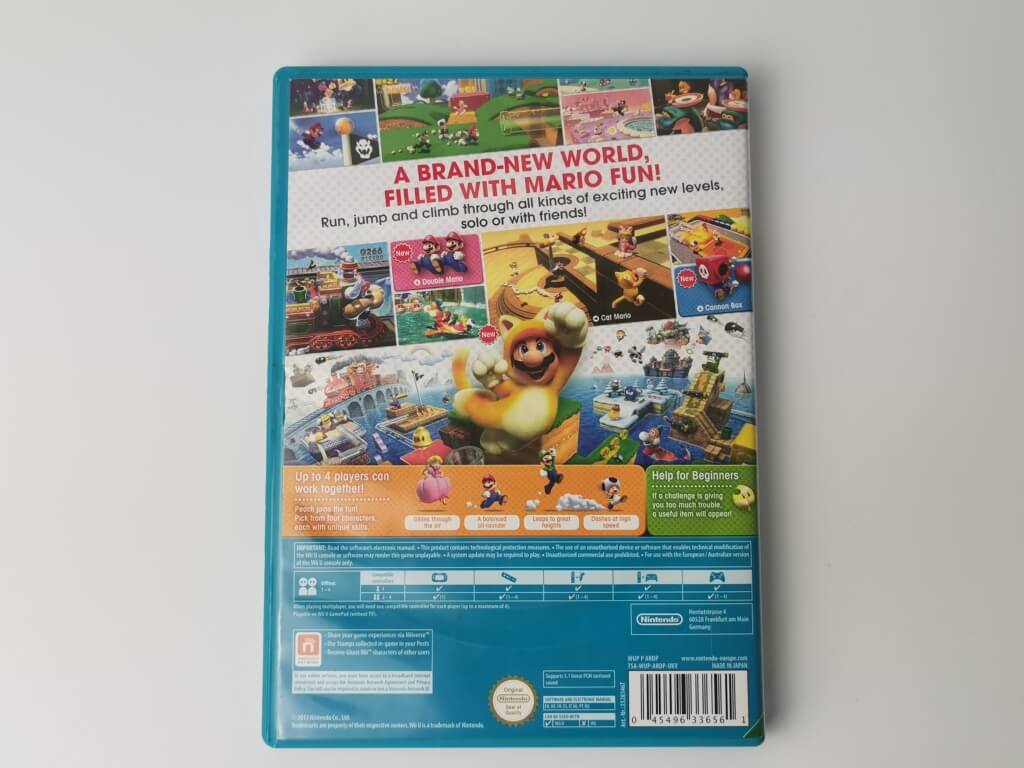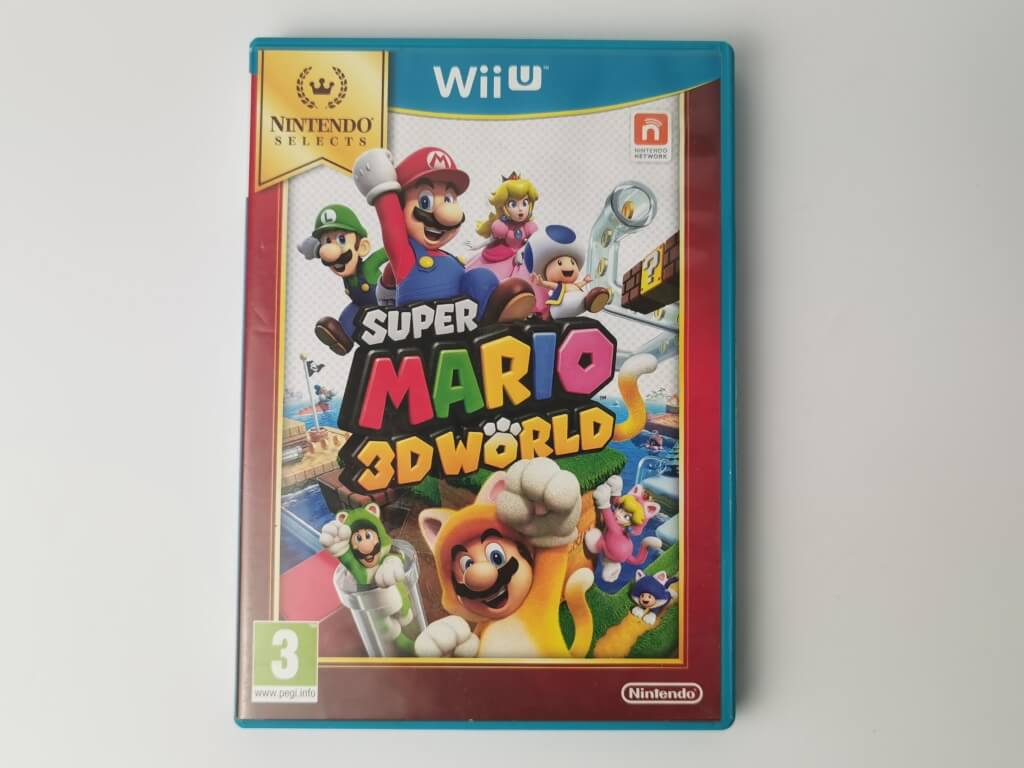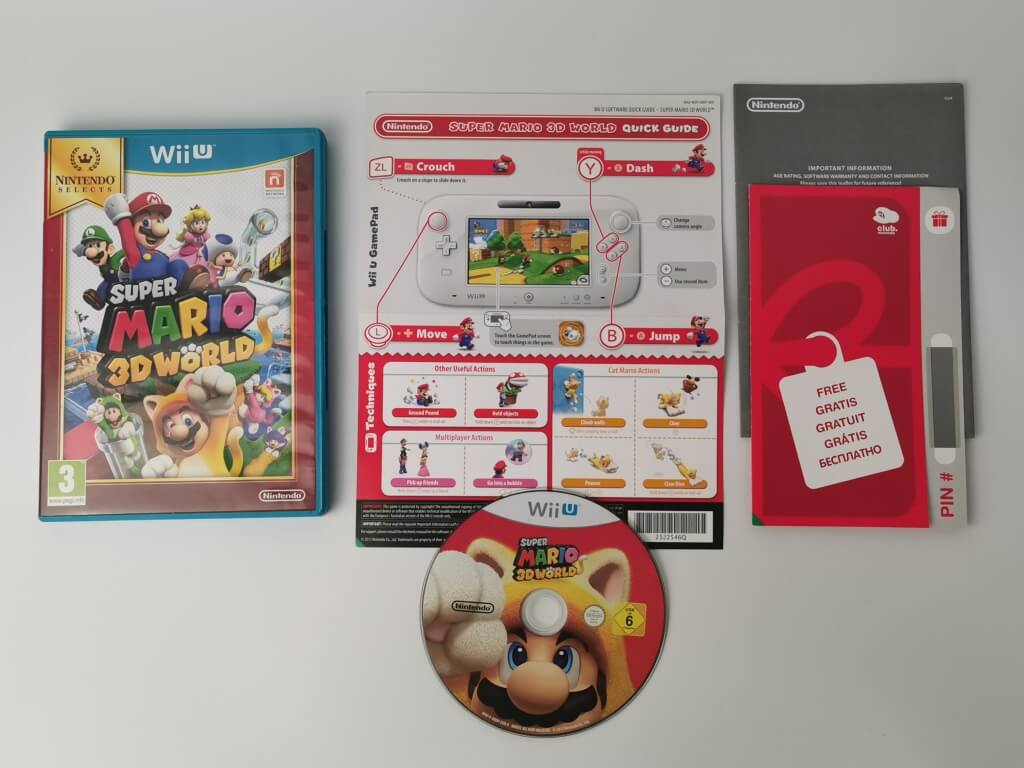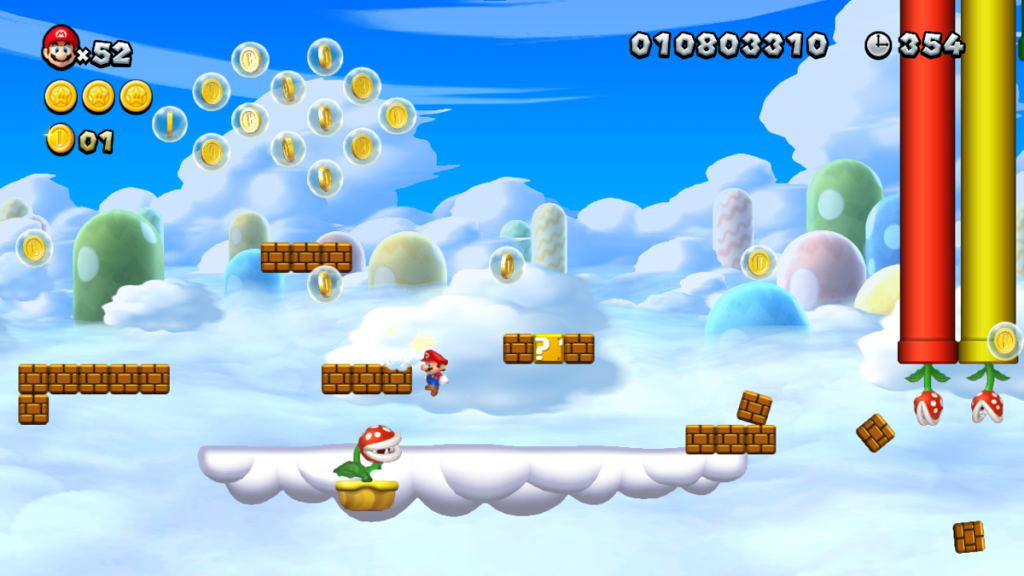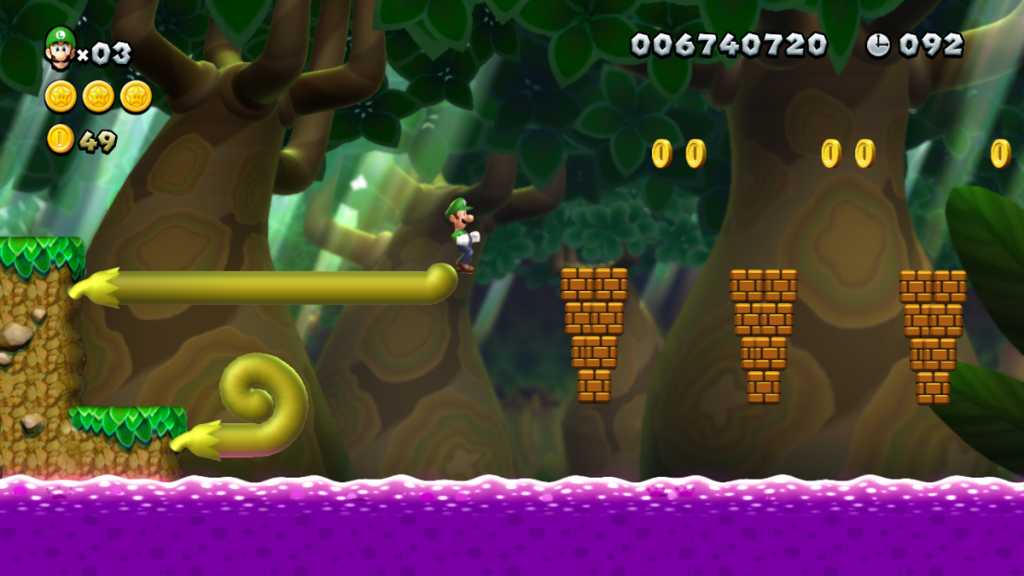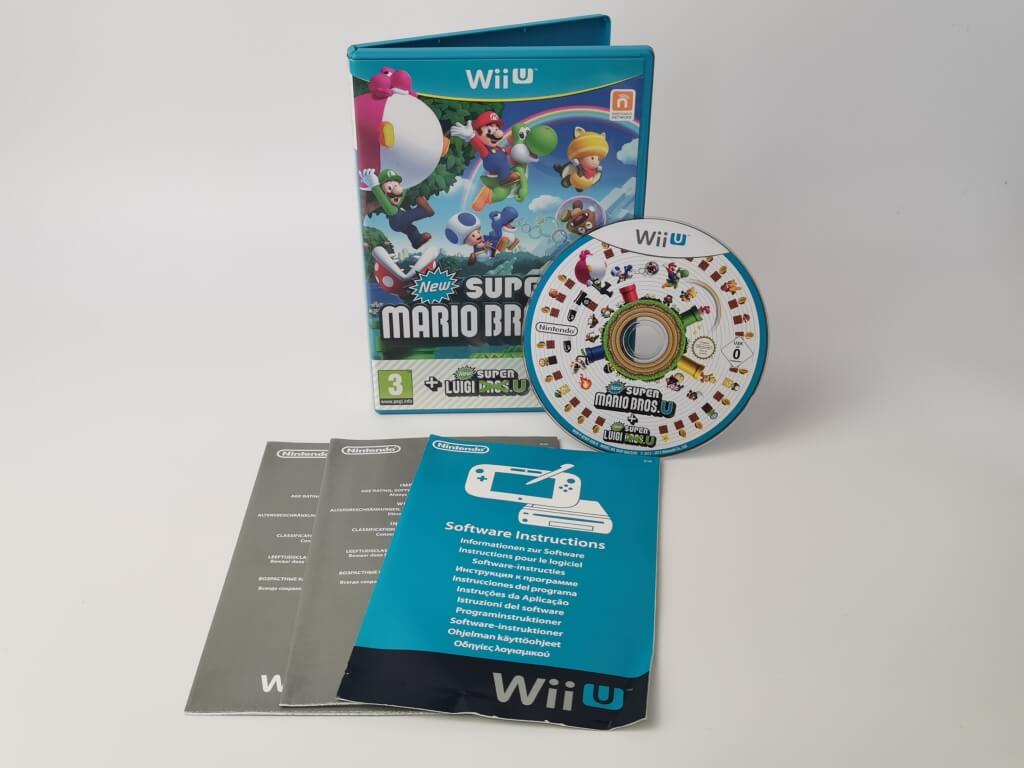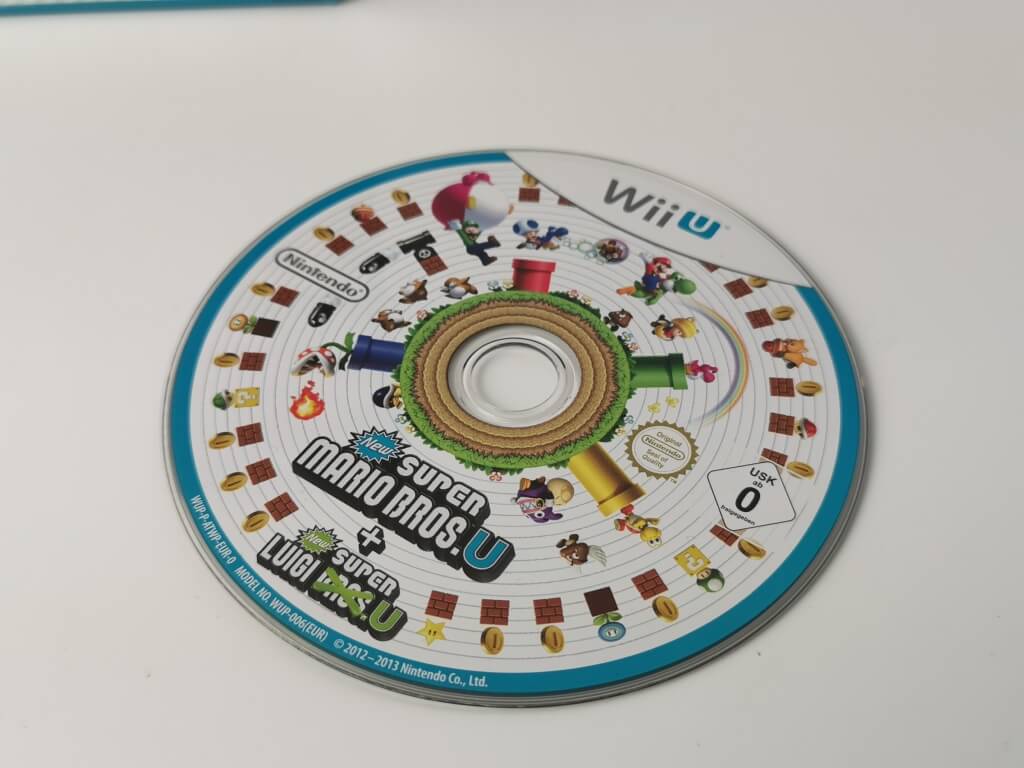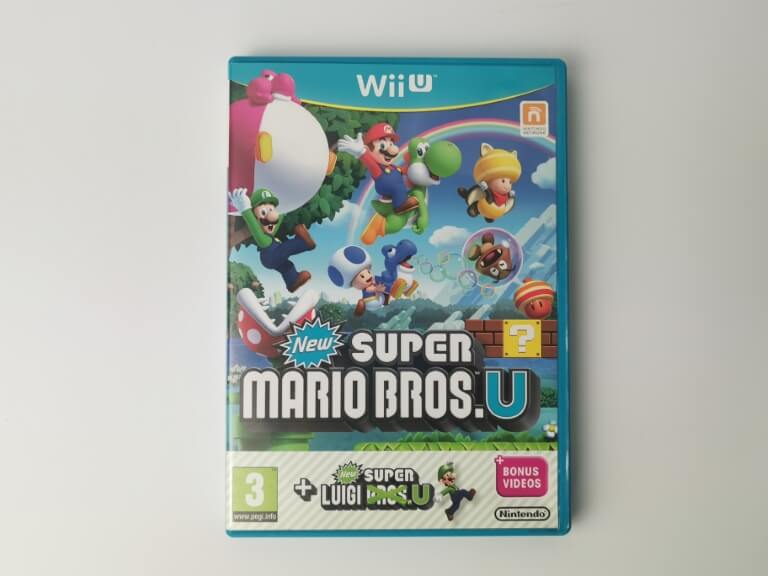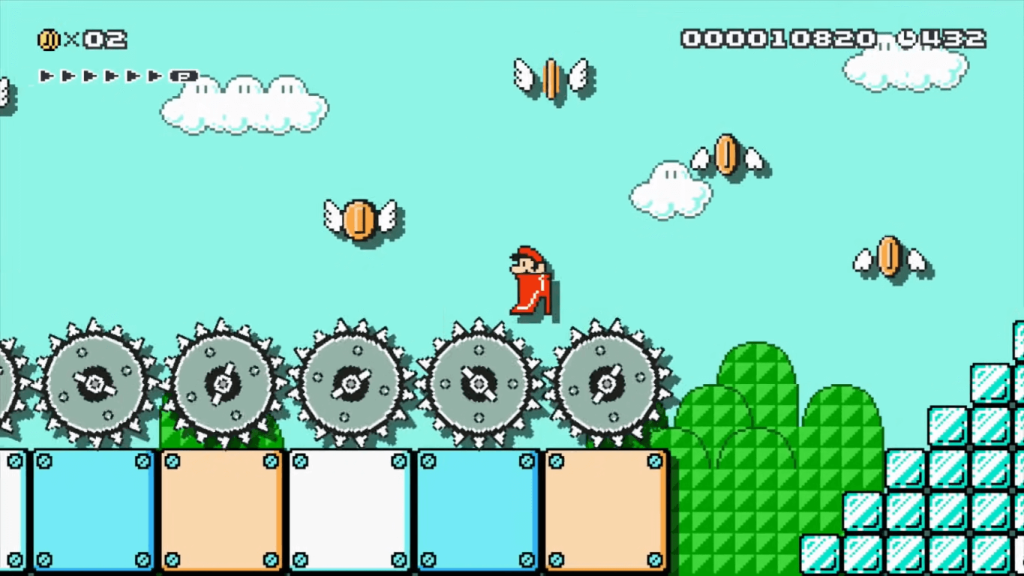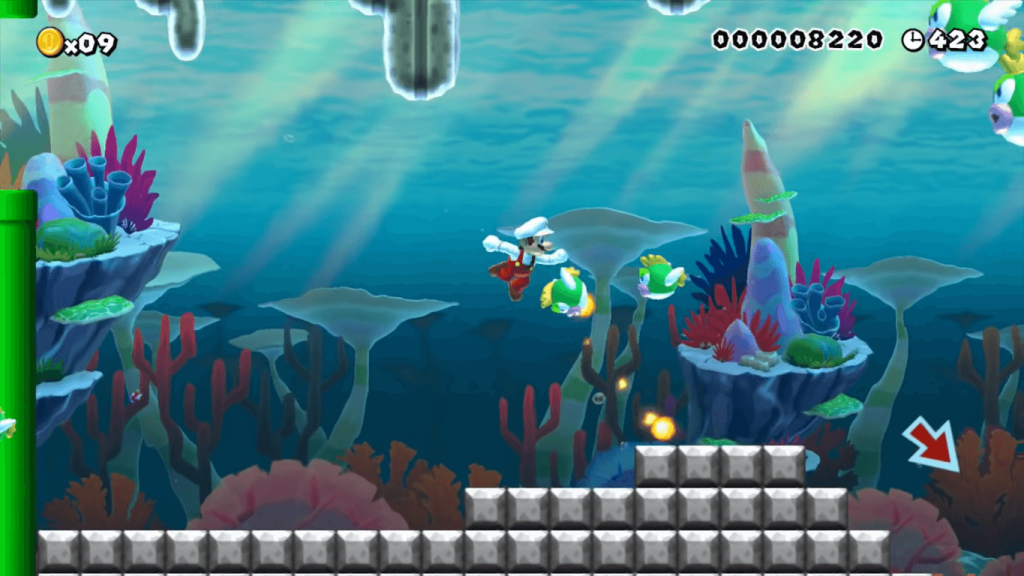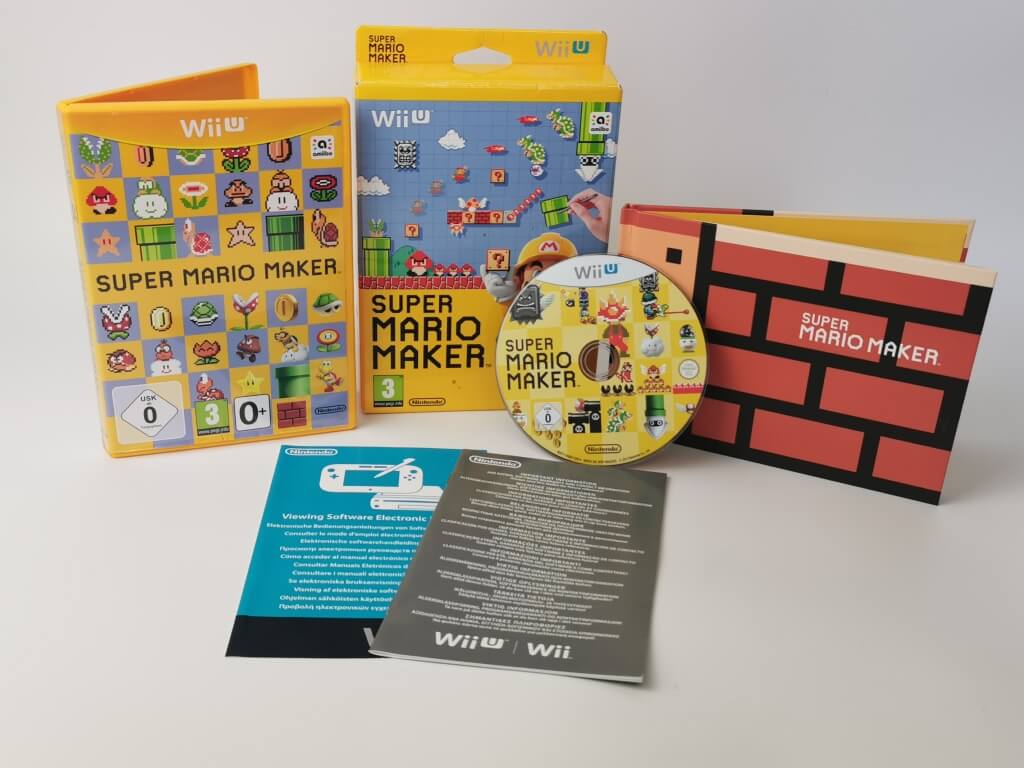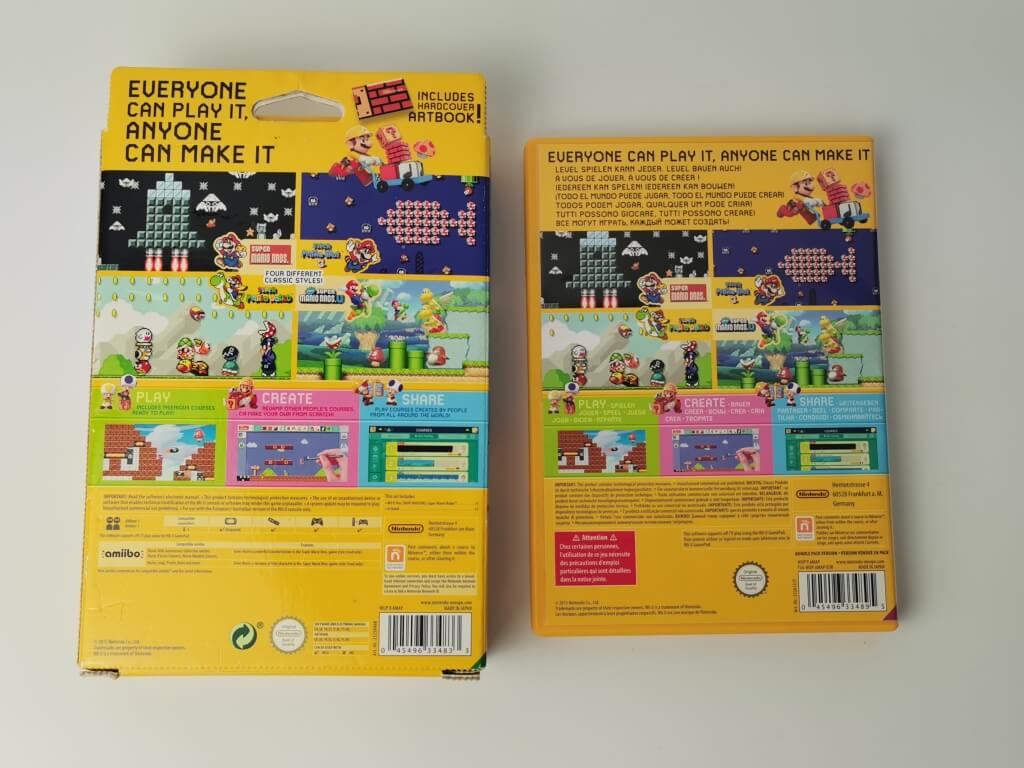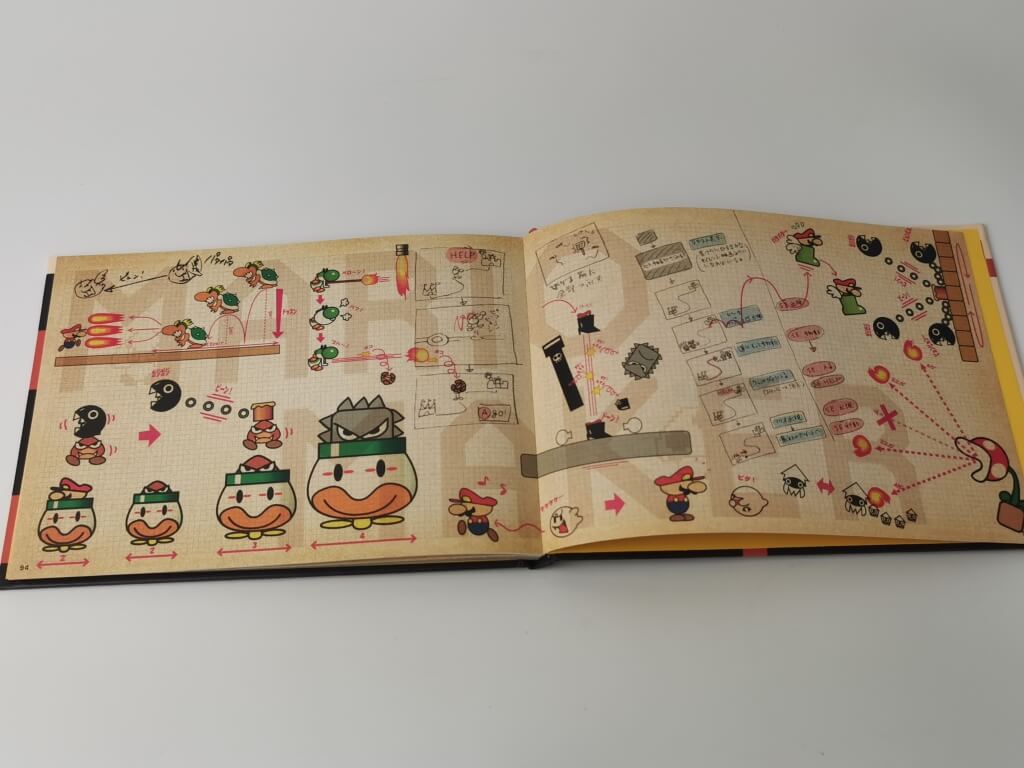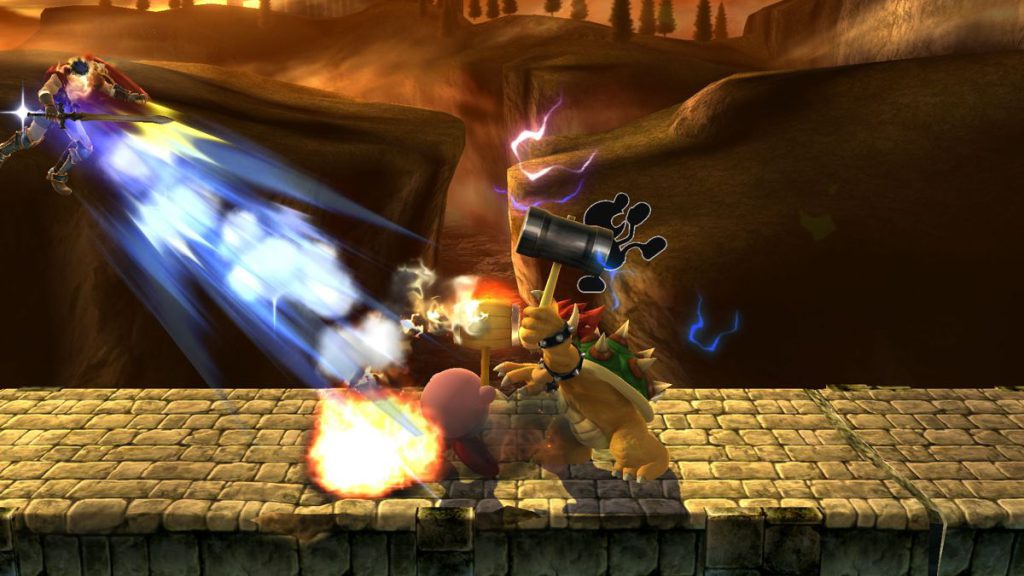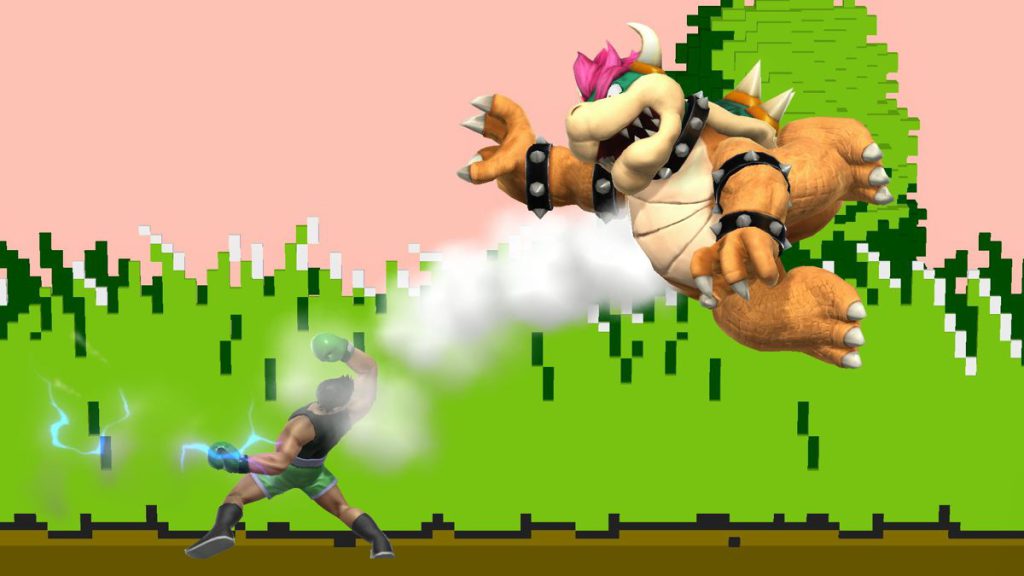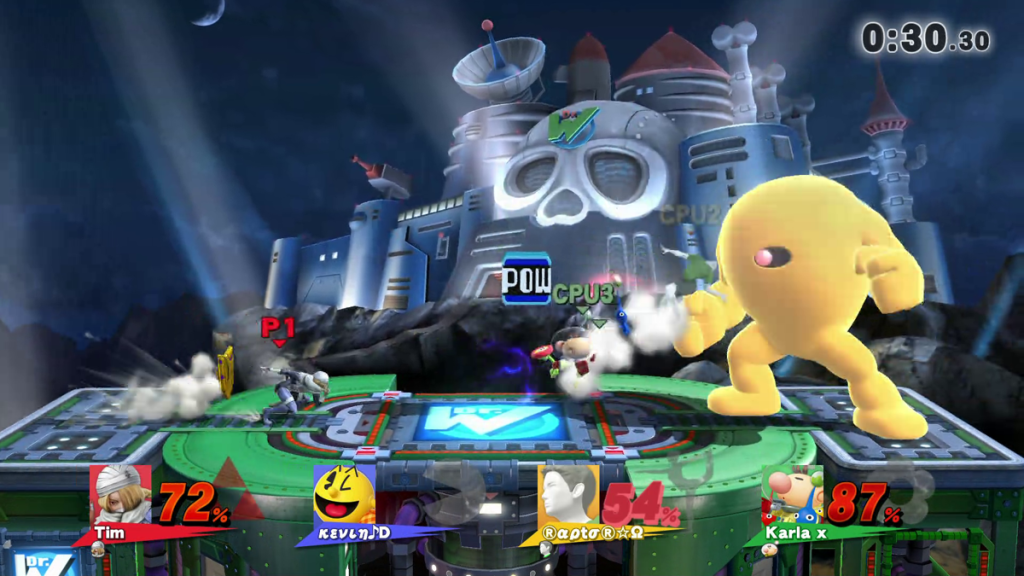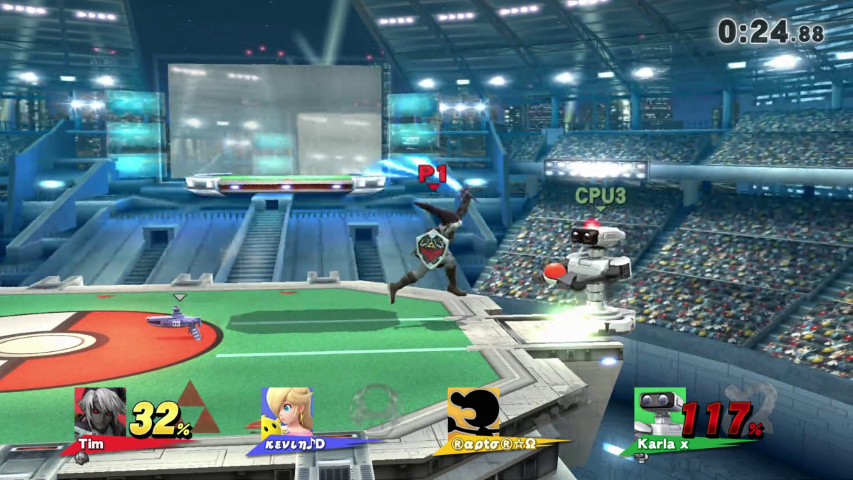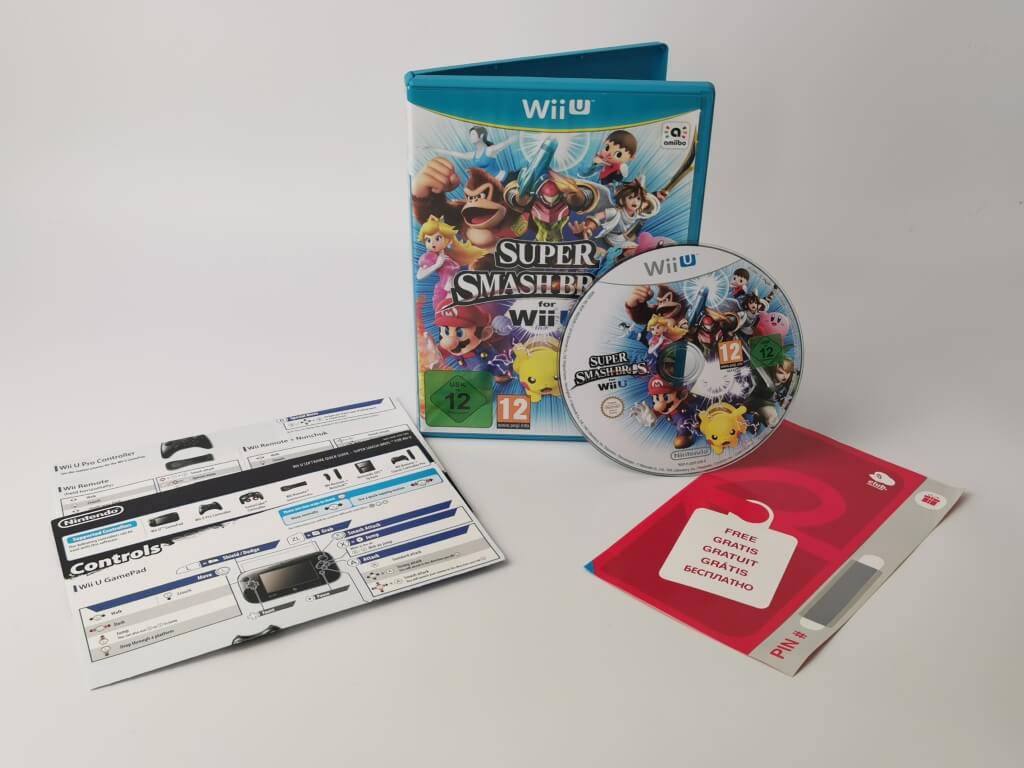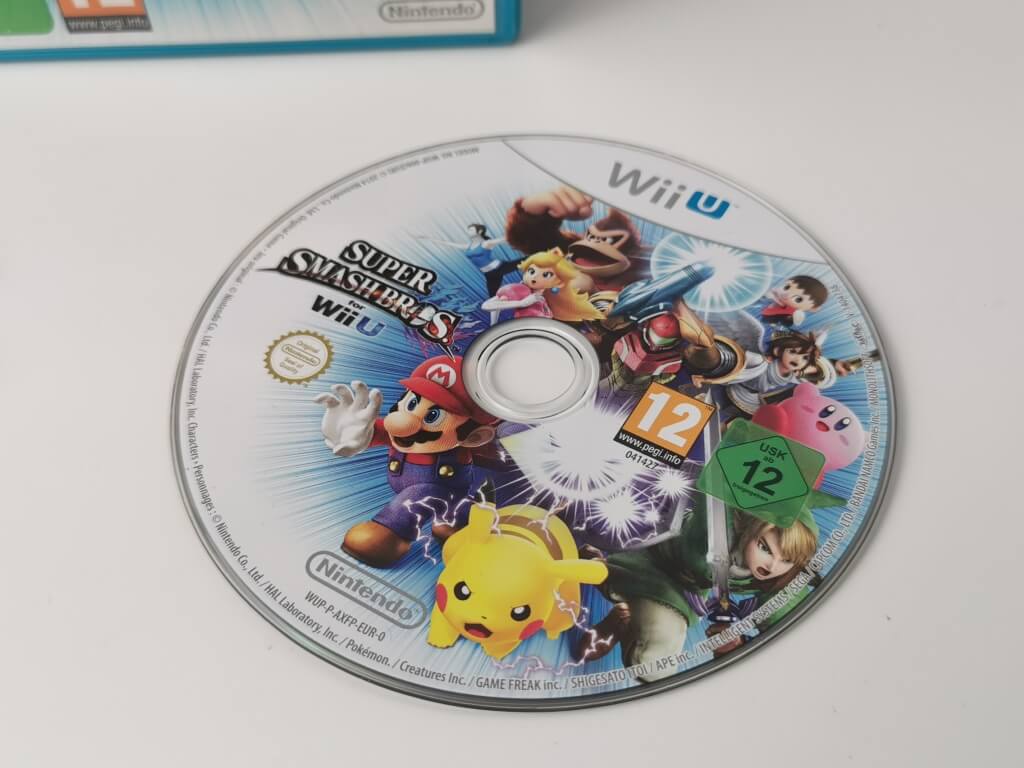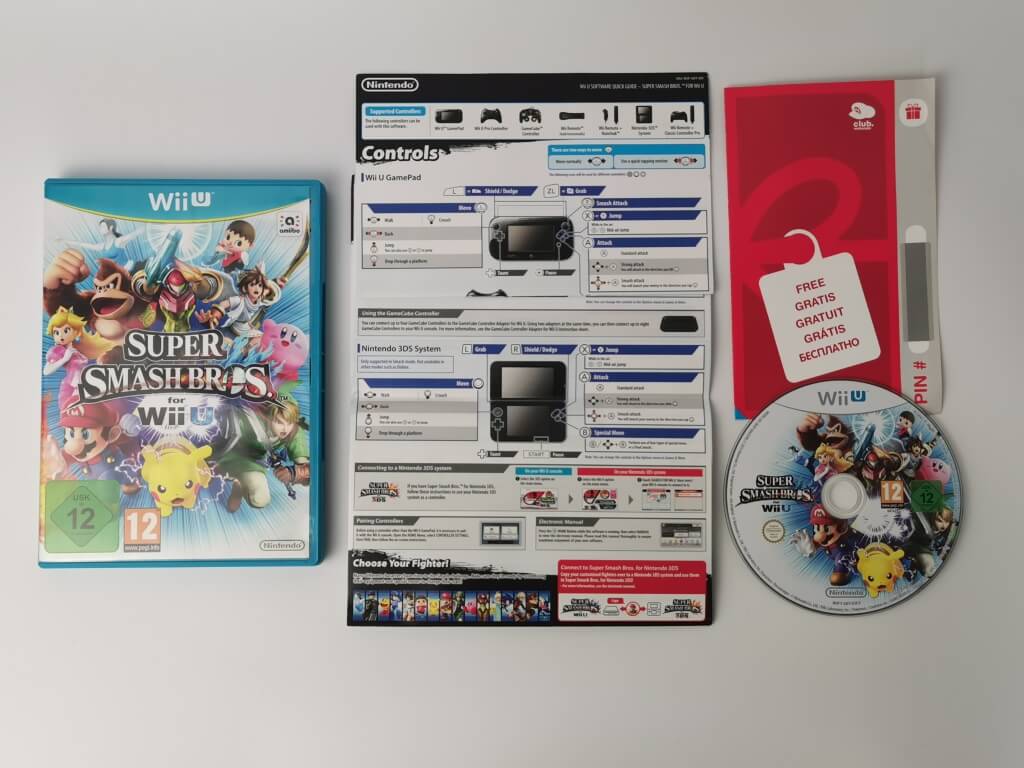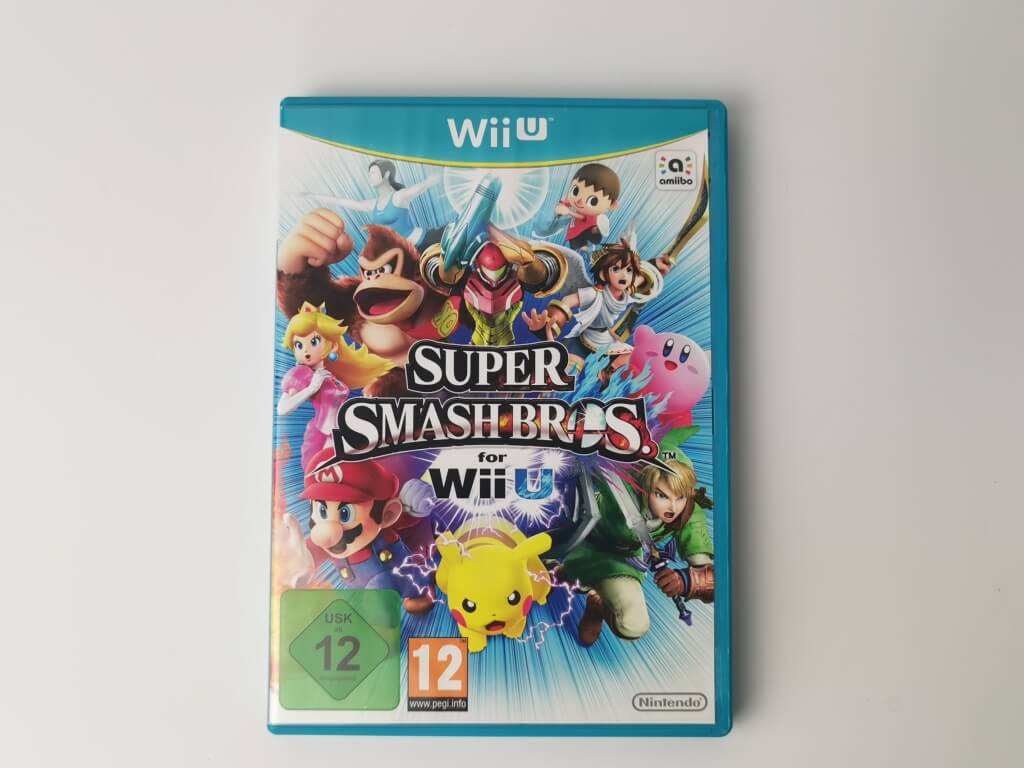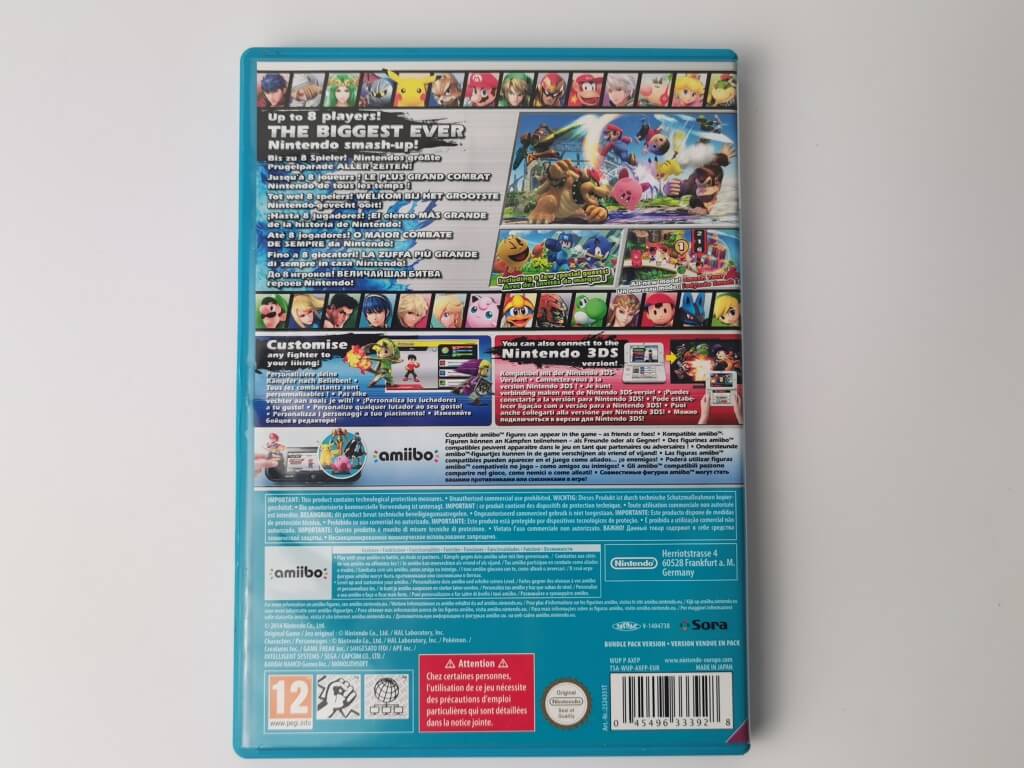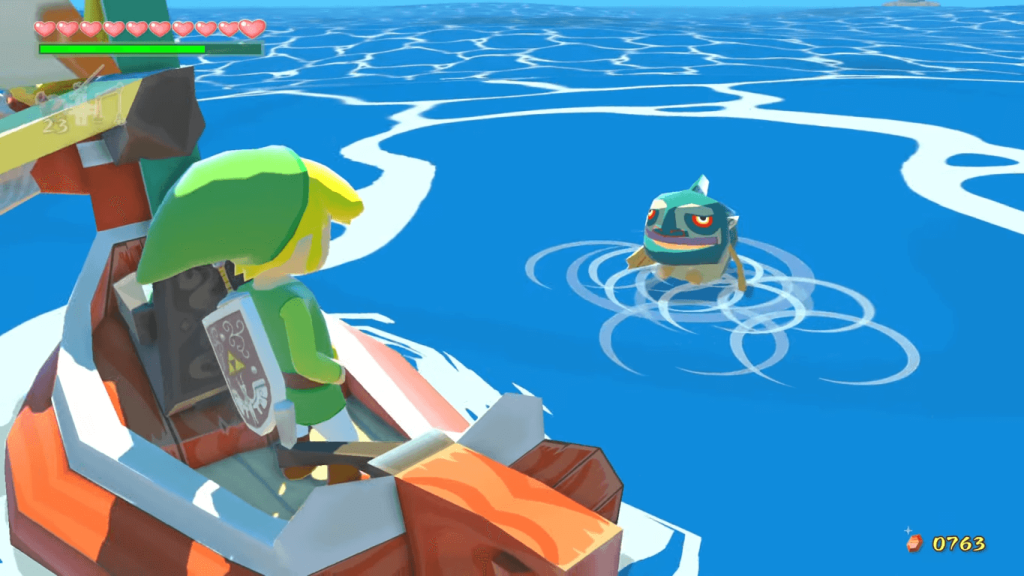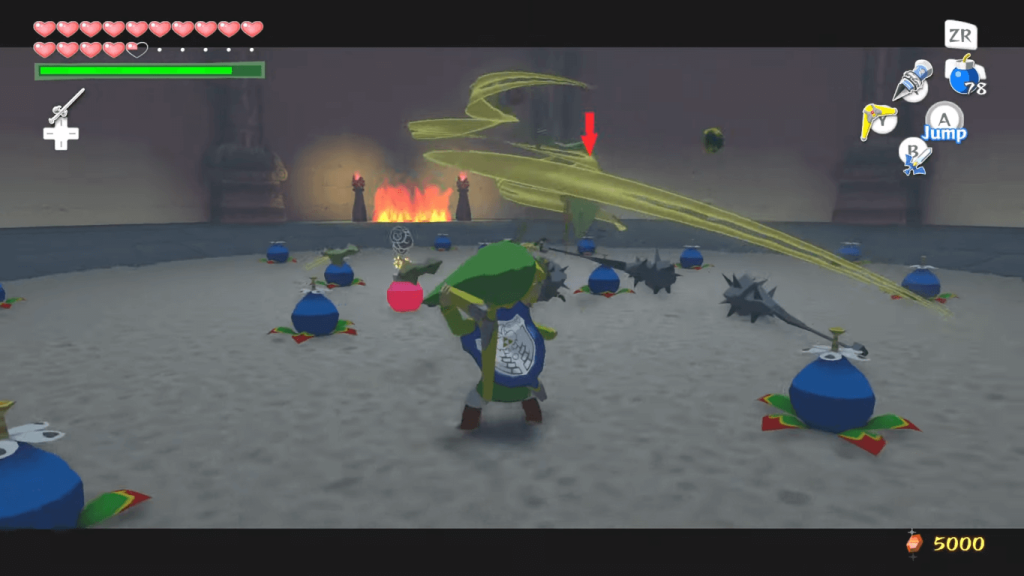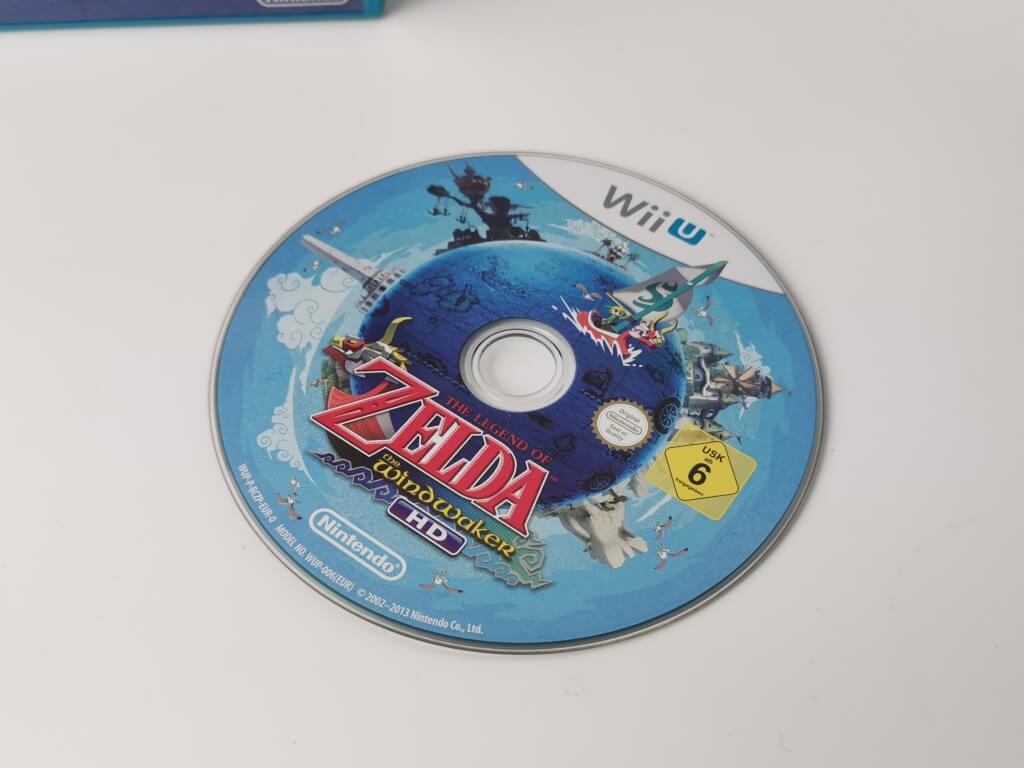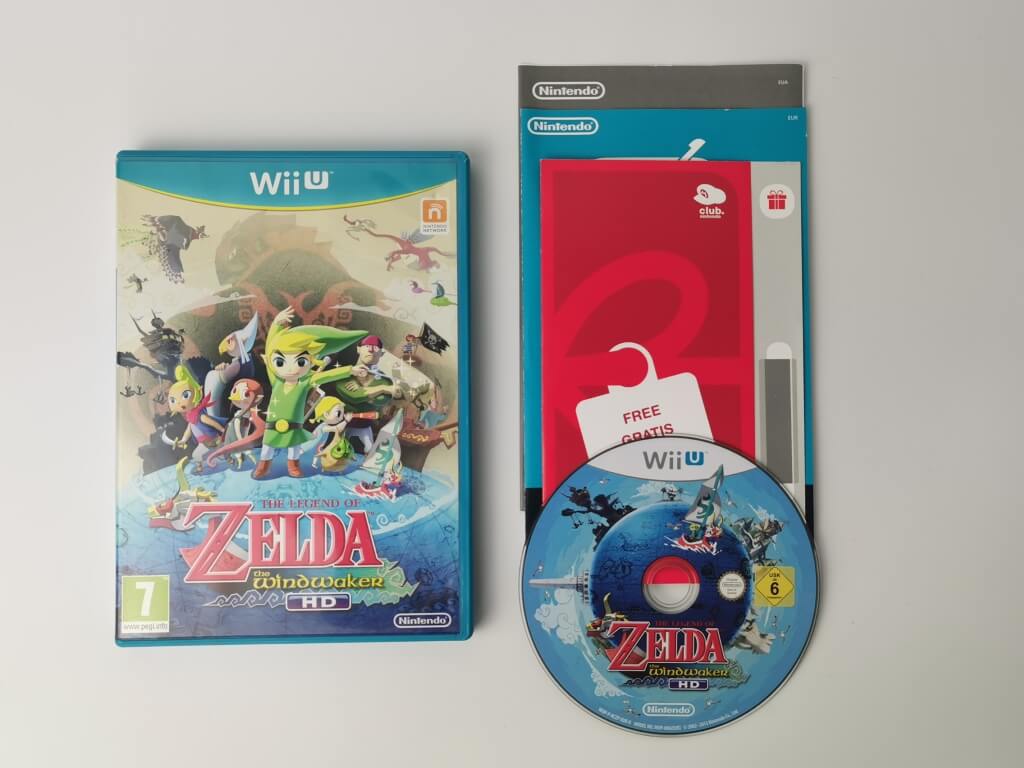Collecting for the WiiU is a frustrating experience. This is the console generation where getting manuals with games, seems to be getting phased out, which is a massive shame as I have a lot of memories growing up of reading the manual before playing the game. A lot of the times it was on the way home from buying the game. With the WiiU, there isn’t a full list of the games that included a manual, but I believe that I have got all the manuals that came with the games. A lot of the times the precautions booklet was the only thing to come with the games.
Donkey Kong Country: Tropical Freeze (2014)
Donkey Kong Country: Tropical Freeze is the fifth game in the Donkey Kong Country series and was released exclusively for Nintendo Wii U and later ported to the Nintendo Switch.
While celebrating Donkey Kong’s birthday the Kong family witnesses how an invasion fleet of arctic creatures (Snowmad) arrives. The island is frozen over and their flagship takes position on top of the island. This can’t go unpunished so the Kong family is off to take back the island.
Like the others in the series is a side-scrolling platform game in 2D view where, as usual, you can control Donkey Kong, Diddy Kong as well as Dixie Kong and now also the grumpy old man Cranky Kong. All are playable, each with their own special abilities that give you an advantage in a specific type of terrain. Along the way the classic K-O-N-G letters as well as puzzle pieces can be collected to offer an extra challenge. While you platform you way through the various regions of the island, you have to overcome various enemies and bosses. Balloons serve as lives, with every hundred bananas collected awarding you one extra balloon.
Mario Party 10 – Nintendo Wii U (2015)
Like its predecessors, Mario Party 10 is a board-game-style party game starring Mario and friends with over 70 mini-games in total. Unlike the previous games there is no real plot or story. The game offers three modes. In the Mario party mode up to four players race the game board and play different mini-games along the way.
Another mode is the Bowser party in witch one player plays as Bowser controlled through the Wii U GamePad. He has to steal the hearts of the other players (up to four) while they have to avoid this from happening in various mini-games.
The last mode, Amiibo party, can only be played with at least one Amiibo figurine and with up to four players. This mode has some own features like a Super Mushroom space where the Amiibo character can transform into a giant.
Mario Kart 8 (2014)
Mario Kart 8 is the 8th instalment of the Mario Kart series, for the Wii U console.
The gameplay includes thirty-two circuits (sixteen brand new ones and sixteen retro ones) on which the characters race riding a variety of vehicles like the returning motorcycles from Mario Kart Wii or the karts, which can be customized.
The game offers six play modes featuring a new mode called Mario Kart TV in which you can create your own pictures and videos. The roster includes thirty characters from the Super Mario universe, twenty-one are returning from previous games and nine are new: Baby Rosalina, Wendy O. Koopa, Iggy Koopa, Larry Koopa, Pink Gold Peach, Morton Koopa Jr., Ludwig Von Koopa, Roy Koopa and Lemmy Koopa. Twenty-one power-ups are included in this game featuring new ones like the Boomerang Flower, the Piranha Plant, the Super Horn and the Eight-crazy.
Nintendo Land (2012)
Nintendo Land is a collection of mini-games designed to showcase various features of the Wii U GamePad. Set inside a virtual theme park of the game’s namesake, each of the twelve games, referred to as “attractions” is inspired by a classic Nintendo franchise.
The games are split into three categories: 3 co-op, 3 competitive and 6 solo games. Co-operative games include The Legend of Zelda Battle Quest, Pikmin Adventure, and Metroid Blast. The competitive games are Mario Chase, Luigi’s Ghost Mansion, and Animal Crossing Sweet Day. The solo games are Donkey Kong’s Crash Course, Captain Falcon’s Twister Race, Octopus Dance, Takamaru’s Ninja Castle, Yoshi’s Fruit Cart, and Balloon Trip Breeze.
The game includes an interactive hub world from which the player can access each of the attractions, though they can quickly be accessed from a menu. As you play, you’ll earn coins which you can use to purchase various items to populate the hub world. In addition to the Wii U GamePad, Wii Remotes, including the motion plus, as well as nunchucks are required to get the most of of the attractions.
Splatoon (2015)
Splatoon is a third-person shooter set in a colour world. Players control Inklings, characters that run around and shoot ink with a gun but can also transform into a squid to traverse through the ink. The game is controlled through the GamePad with the left analog stick for movement. Next to regular means to aim, gyroscopic motion control, by tilting the device, is supported with the right analog stick to look left or right and the triggers to shoot with a machine-gun like weapon and throw large bombs. The game offers a large selection of primary and secondary weapons that can be equipped before battle. These include regular guns, rifles, bombs, grenades, a giant paint roller and items such as a shield, enemy detectors and inkstrikes. The game can also be played using a Pro Controller or Classic Controller, optionally in conjunction with a MotionPlus-enabled Wii Remote.
Shooting ink colours the environment and the areas that are covered in a colour can be used to traverse quickly as a squid by transforming. In squid form the character cannot shoot, but moves quicker, can hide and can also scale vertical surfaces and swim through grates. Ink ammo is not unlimited and is refilled by transforming into a squid. Characters can jump, also in squid form with a more powerful dash jump. Enemies shoot ink in a different colour that covers the environment as well. This slows down the characters in regular form and cannot be swum through in squid form, so they need to counter it by painting it over with their own colour. There is a limited amount of health that can be regenerated by seeking cover.
Super Mario 3D World (2013)
While having a walk in the Mushroom Kingdom, Mario, Toad and Peach, and Luigi happen on one of the many green pipes, yet a special one. A fairy, which they’ll learn is Princess Sprixie, comes out. Bowser is chasing after her, though: he kidnaps her and vanishes through the pipe. Mario and the friends of his can’t but promptly jump into the pipe, and they find themselves in the Sprinxie Kingdom, tasked with rescuing the princess.
In Super Mario 3D World, levels alternate free roaming in their three-dimensional environment with bidimensional platform action, following the manner of former 3D Mario games.
Game play is singleplayer or multiplayer, co-operative or free-for-all, up to 4 players. Available character roster consists of Mario, Luigi, Peach, Toad. Each of them has different statistics in terms of time needed to sprint, run speed, jumping height: traditionally, Luigi can reach by jumping areas the others can’t that way, Toad is the swiftest of all but can barely jump, Peach is rather slow but able to hover mid-air gliding over gaps that halt the others, Mario is average in all skills. Some tasks can be achieved with more ease, or only, by a character shouldering another one
New Super Mario Bros. U + New Super Luigi U (2013)
A special bundle pack included in Wii U Mario & Luigi Deluxe Set that includes:
- New Super Mario Bros. U
- New Super Luigi U
New Super Mario Bros. U is the second console installment of the New Super Mario Bros. sub-series, and the first on Wii U. As with all New Super Mario Bros. games, the game is a throwback to the original 2D Mario games, but with new levels and features for a modern experience.
NSMBU allows for a multiplayer experience on the Wii U. Up to four players can join in, with a fifth player using the GamePad to place “Boost Blocks”. The game can also be played on the GamePad in single player mode.
In addition to the core campaign, there are also challenge modes. The challenge modes ask players to complete certain challenges. There is also boost rush and coin battle modes.
New Super Luigi U is an expansion for New Super Mario Bros. U. It replaces Mario with Luigi as Player 1, with Blue Toad, Yellow Toad, Nabbit and Mii as playable characters. Luigi has his own abilities, higher jump and lower traction, to help him in the redesigned levels that now have increased in difficulty and start at one hundred seconds. While the levels have a major makeover, the World Map itself remains unchanged. Challenge Mode and Boost Rush, from the original game, are no longer available.
Super Mario Maker (2015)
Super Mario Maker is a Mario level creator and editor released in 2015 for the Wii U to celebrate the 30th anniversary of the Super Mario series.
The game consists of creating your own levels and playing premade and online stages with graphics and features across four Mario games: Super Mario Bros., Super Mario Bros. 3, Super Mario World and New Super Mario Bros. U. You can place objects like “?” blocks that contain items and power-ups, pipes, blocks of different colors and styles, flamethrowers, spikes, switches and enemies like Goombas, Koopas, Buzzy Beetles, Spinies, Cheep Cheeps, Thwomps, Boos, Bowser, etc. (although some are exclusive to certain versions). This game also has the 100 Mario challenge, which has 3 levels of difficulty and brings you levels that most of the community hasn’t completed. It also includes the 10 Mario with pre-made courses to play. This game also has MiiVerse features and amiibo compatibility so you can scan figures and use them in the game.
Super Smash Bros. for Wii U (2014)
Super Smash Bros. for Wii U is, along with its 3DS counterpart, the fourth entry in Nintendo’s crossover fighting franchise, featuring dozens of characters from across Nintendo’s catalog, along with a few special guests. The basic formula is unchanged since the previous title: up to eight characters, controlled by either human players or the computer, duke it out in arenas based on Nintendo games; the list of available stages on the Wii U largely differs from the 3DS game’s offerings. As characters take damage, they are sent flying further by attacks, and if they fly — or fall — out of the arena, then they’re out!
Most of the fighters from previous entries have returned, along with numerous newcomers, including Mega Man, Pac-Man, Little Mac (Punch-Out), Shulk (Xenoblade Chronicles), Palutena (Kid Icarus), Villager (Animal Crossing), and numerous others for a total of more than three dozen playable characters. It is also possible to design a custom Mii-style fighter using parts and abilities unlocked throughout the game; this character can also be transferred for use in the 3DS version of the game.
The game includes standard 2-to-4-player battle modes, including both time and stock matches, playable via either local wi-fi or internet play. Certain stages in the game support 2-to-6 or 2-8-player battles, but only for local play. Returning from previous entries is the All Star mode, where the player must defeat all other characters in the game in order, with only limited healing items available. The trophy collection system introduced in Melee also returns, giving players a glimpse at classic and modern Nintendo characters and other objects in full 3D.
The Legend of Zelda: The Wind Waker (2013)
Link is a young boy who lives with his grandmother on the Outset Island, one of the many small islands lost amidst the waters of the Great Sea. On his tenth birthday, Link encounters a giant bird carrying a girl. Link rescues the girl, but as a result his own sister is taken away by the bird. The unknown girl is a pirate captain named Tetra, who agrees to help Link find and rescue his sister. During the course of their journey the two realize that a powerful, legendary evil is active again, and must find a way to stop him.
The Wind Waker is the tenth installment in the Zelda series. Like its predecessors, it is an action game with puzzle-solving and light role-playing elements. Basic gameplay mechanics are similar to those found in Ocarina of Time: Link explored 3D outdoor areas and dungeons, fighting enemies and occasionally solving environmental puzzles. An addition to the combat system is the ability to parry at specific times, which is needed to overcome armored foes. Another new feature is picking up and using some of the weapons wielded by the enemies. Similarly to previous games, Link can use tools such as bow and arrow, boomerang, and bombs.
Link needs to sail through the Great Sea in order to travel to other islands. He uses a baton called the Wind Waker to change wind direction by conducting it and producing melodies. The Wind Waker is also used for teleportation and puzzle-solving purposes. Link can use wind currents to glide and access remote areas.
Visually, the game utilizes cel-shaded graphics to create a cartoon-like appearance. The characters’ bodily proportions and facial features are not realistic, complementing the style. Link’s big eyes, in particular, also have a gameplay-related function, giving clues to the player by looking at specific items needed to solve puzzles.

